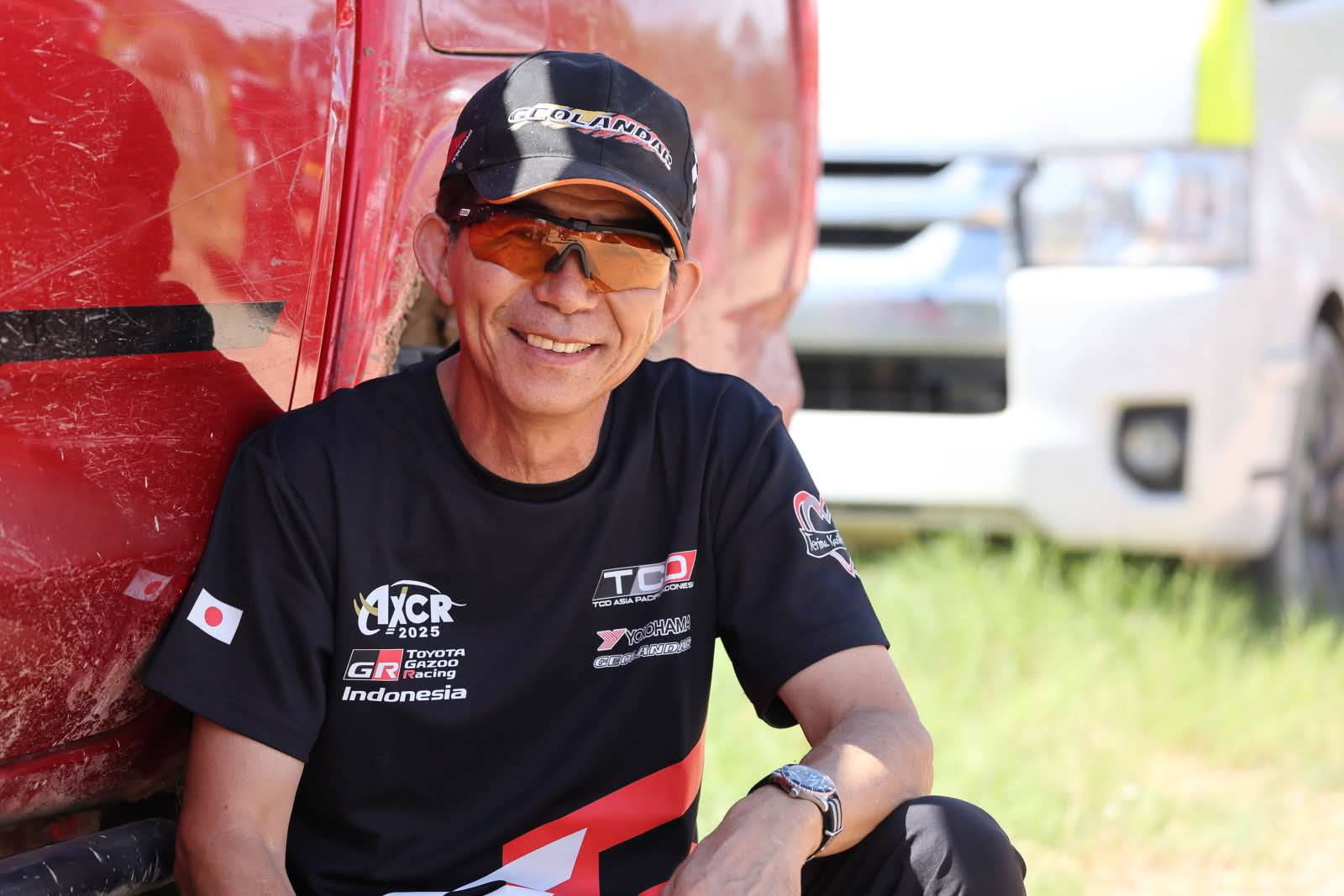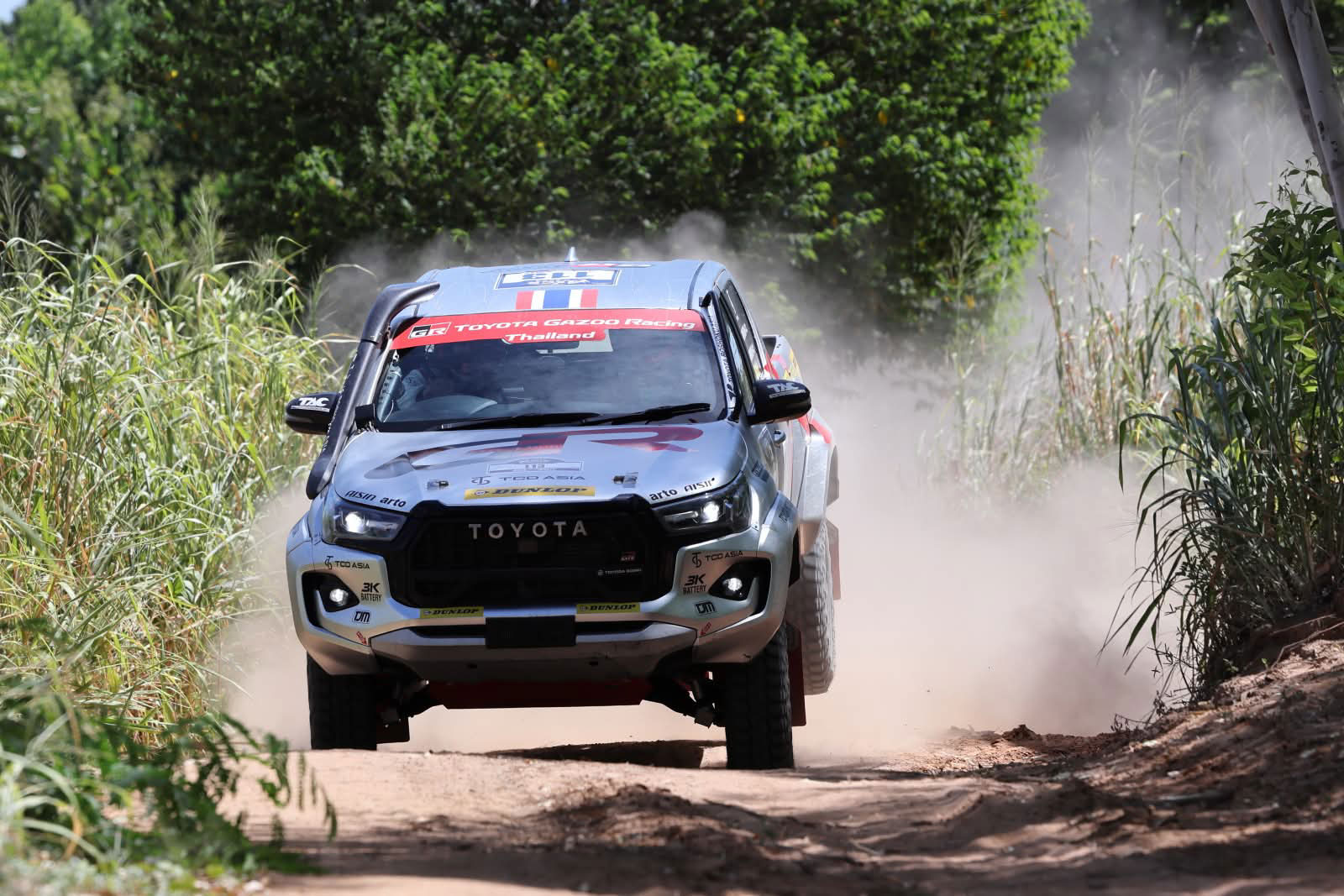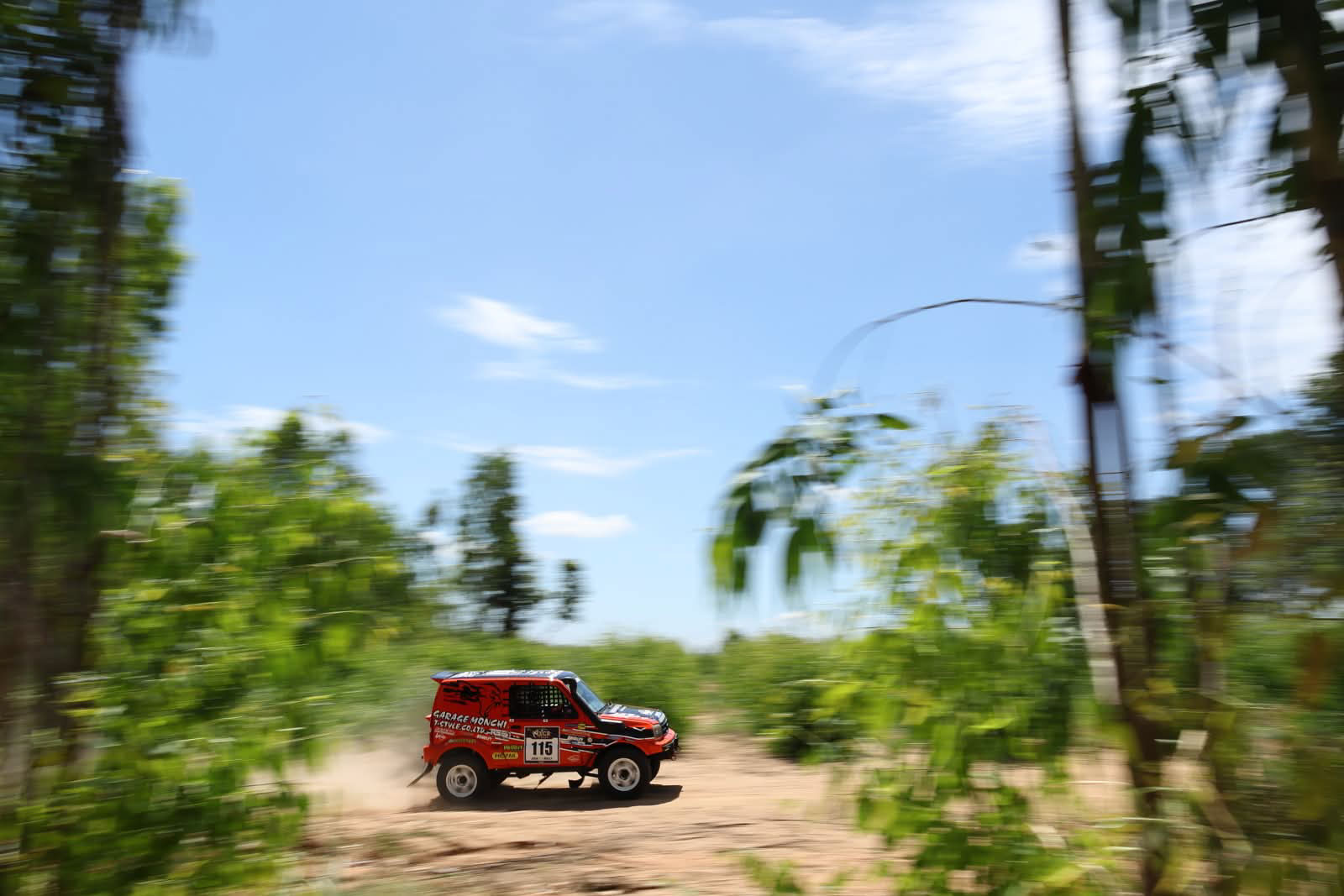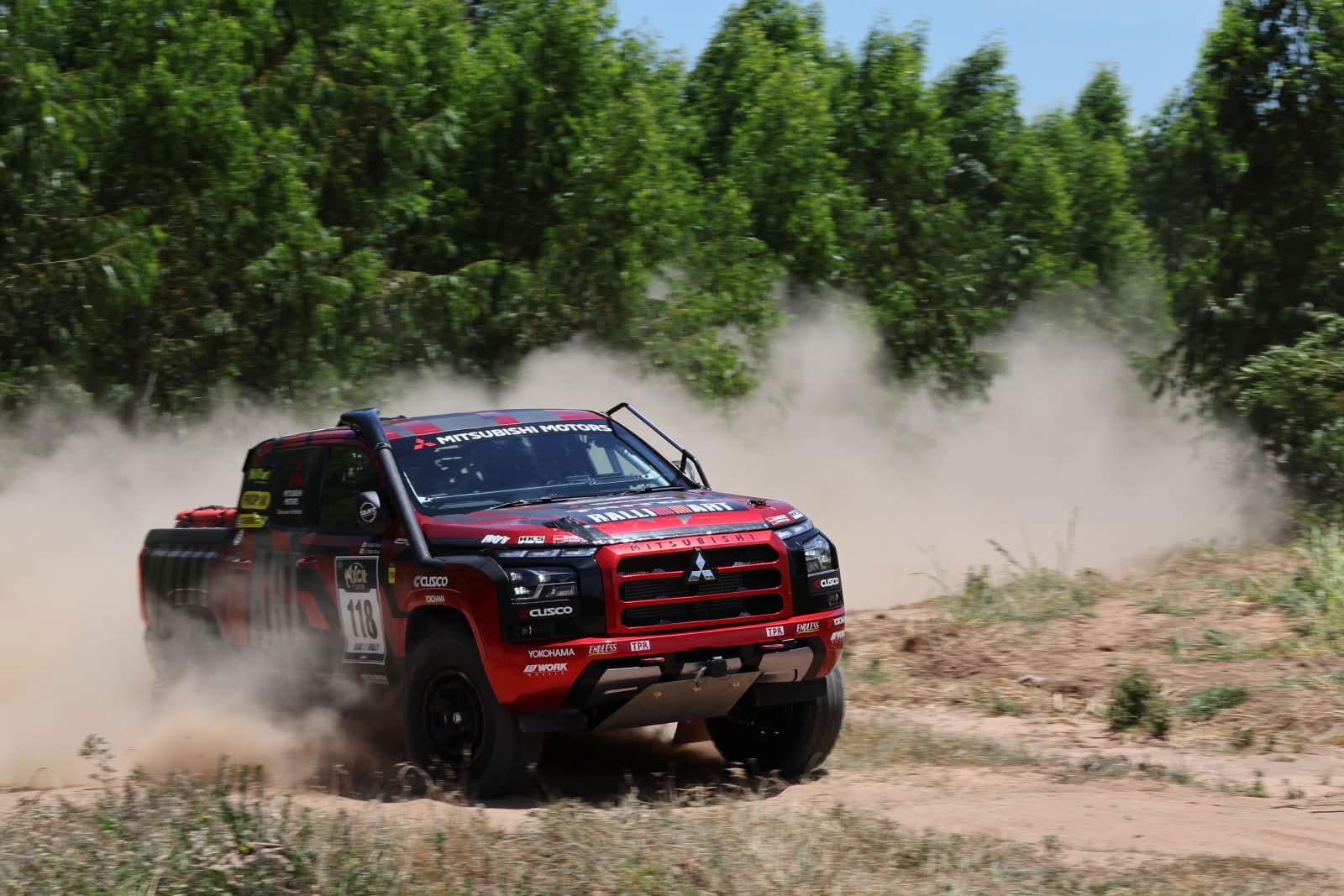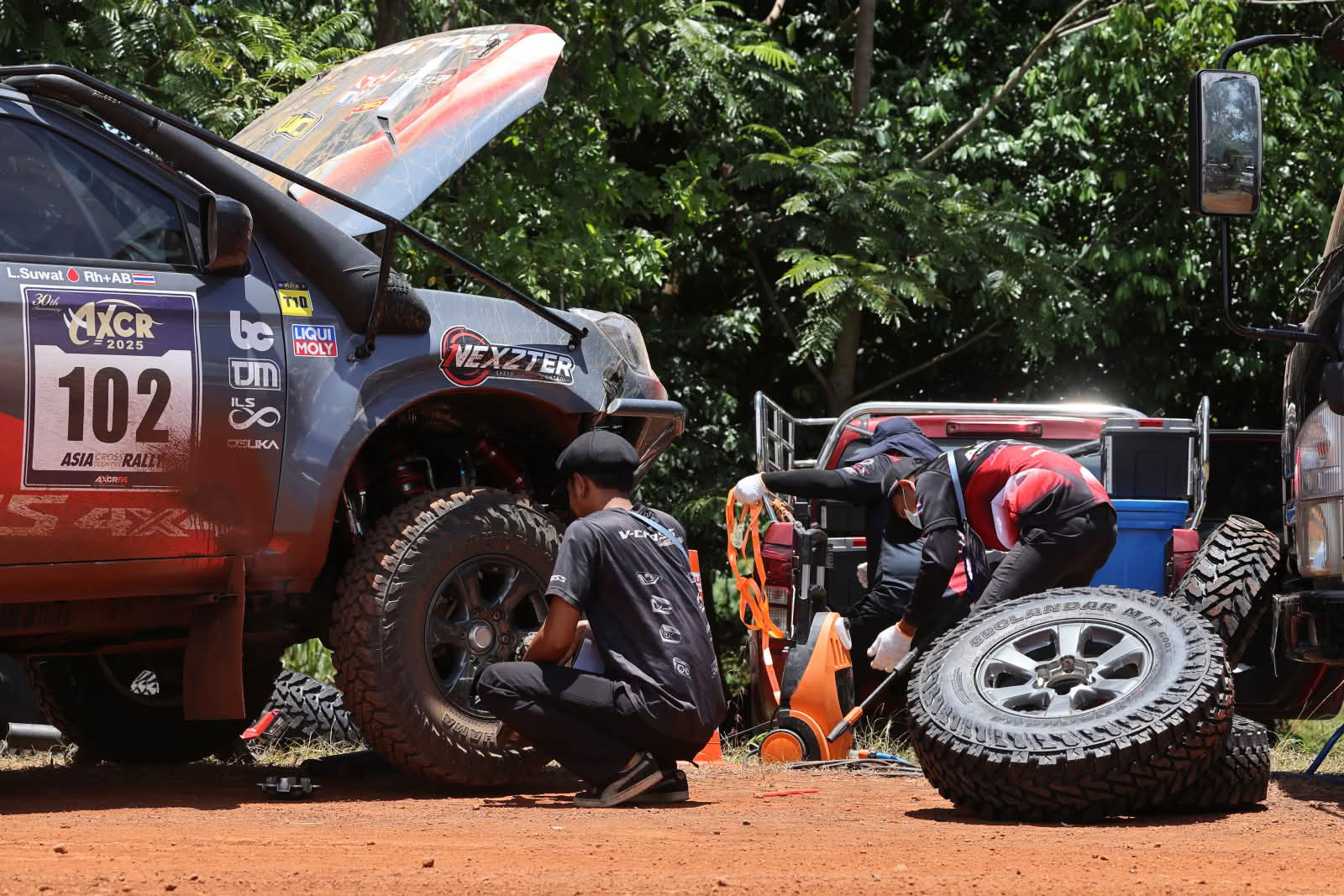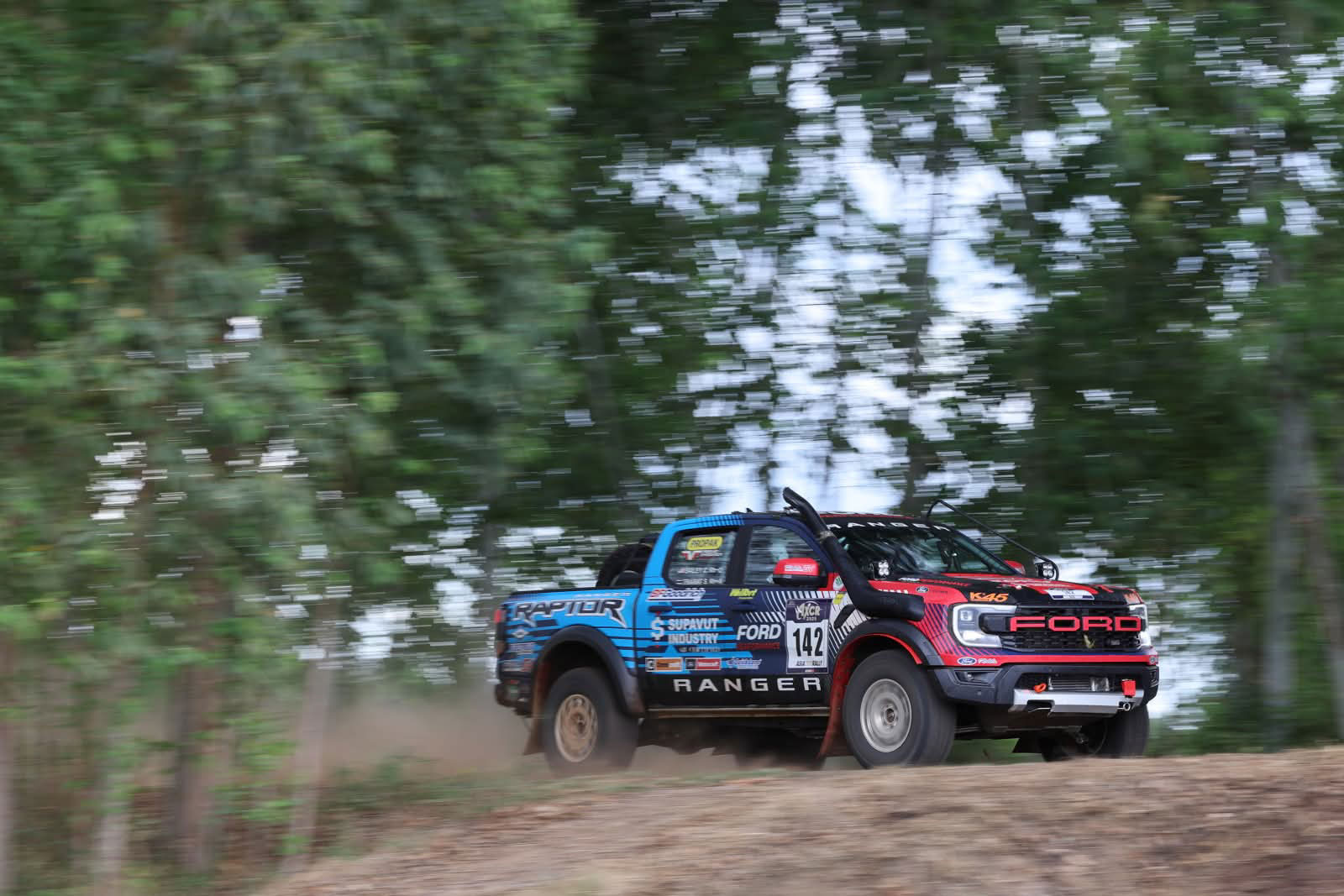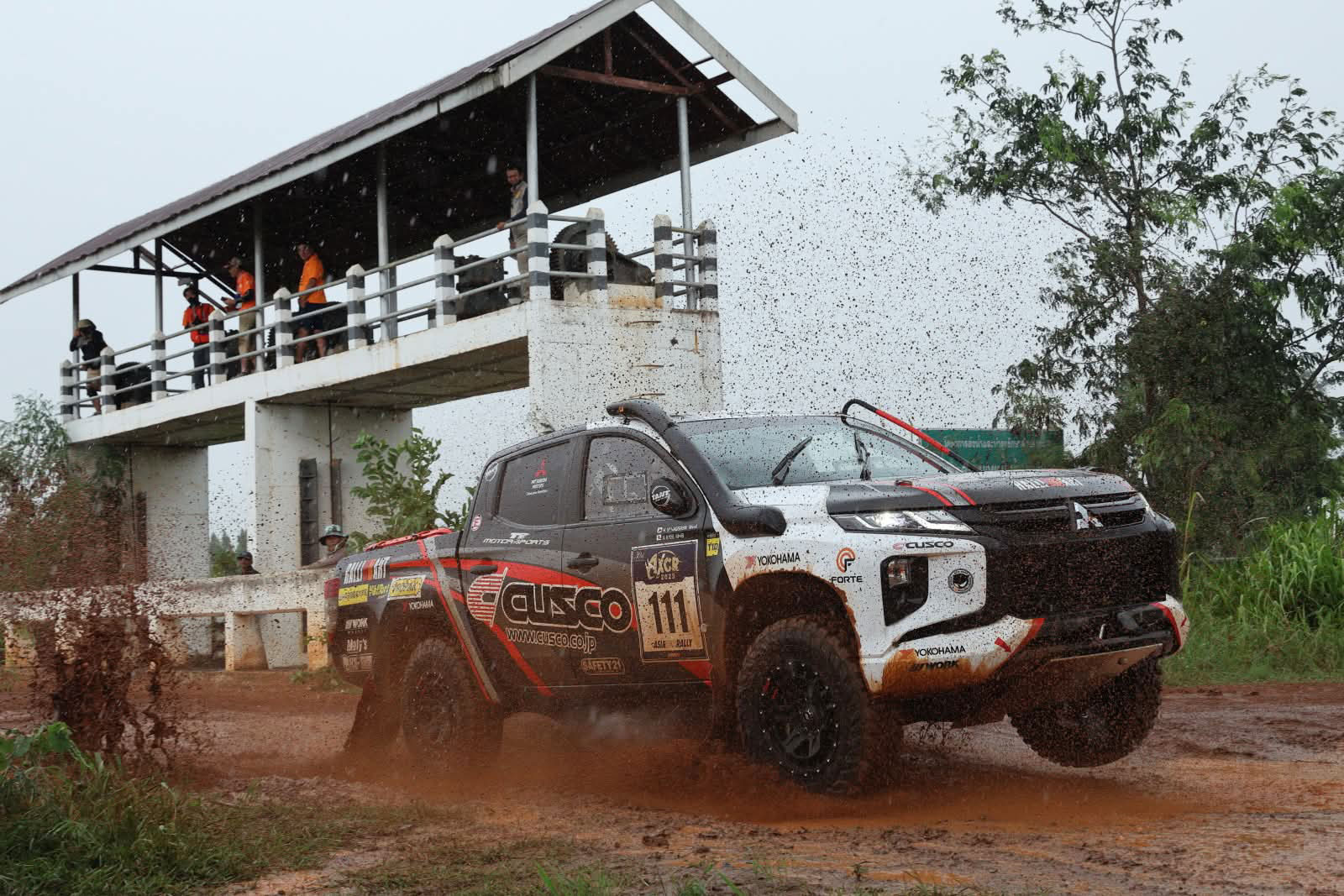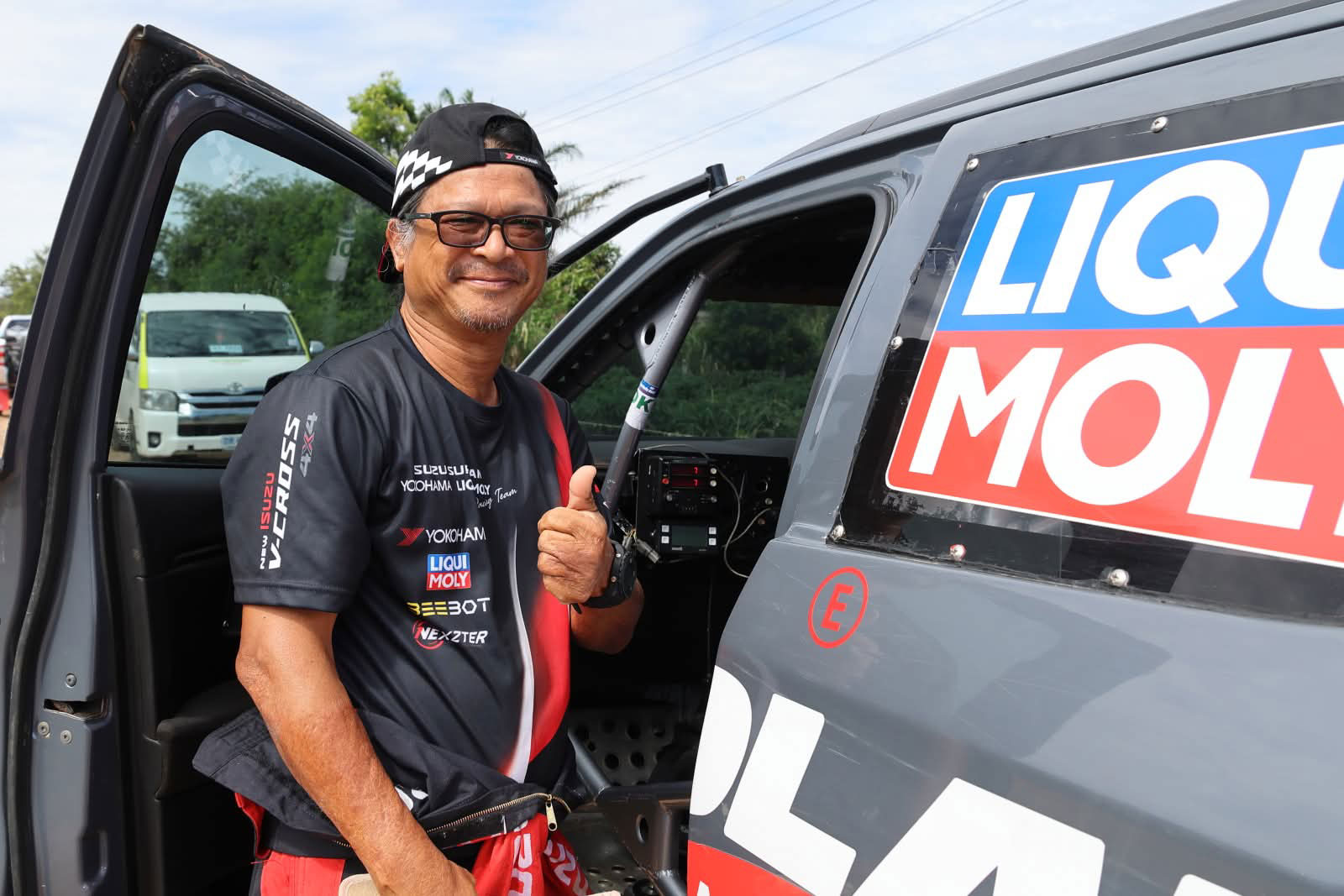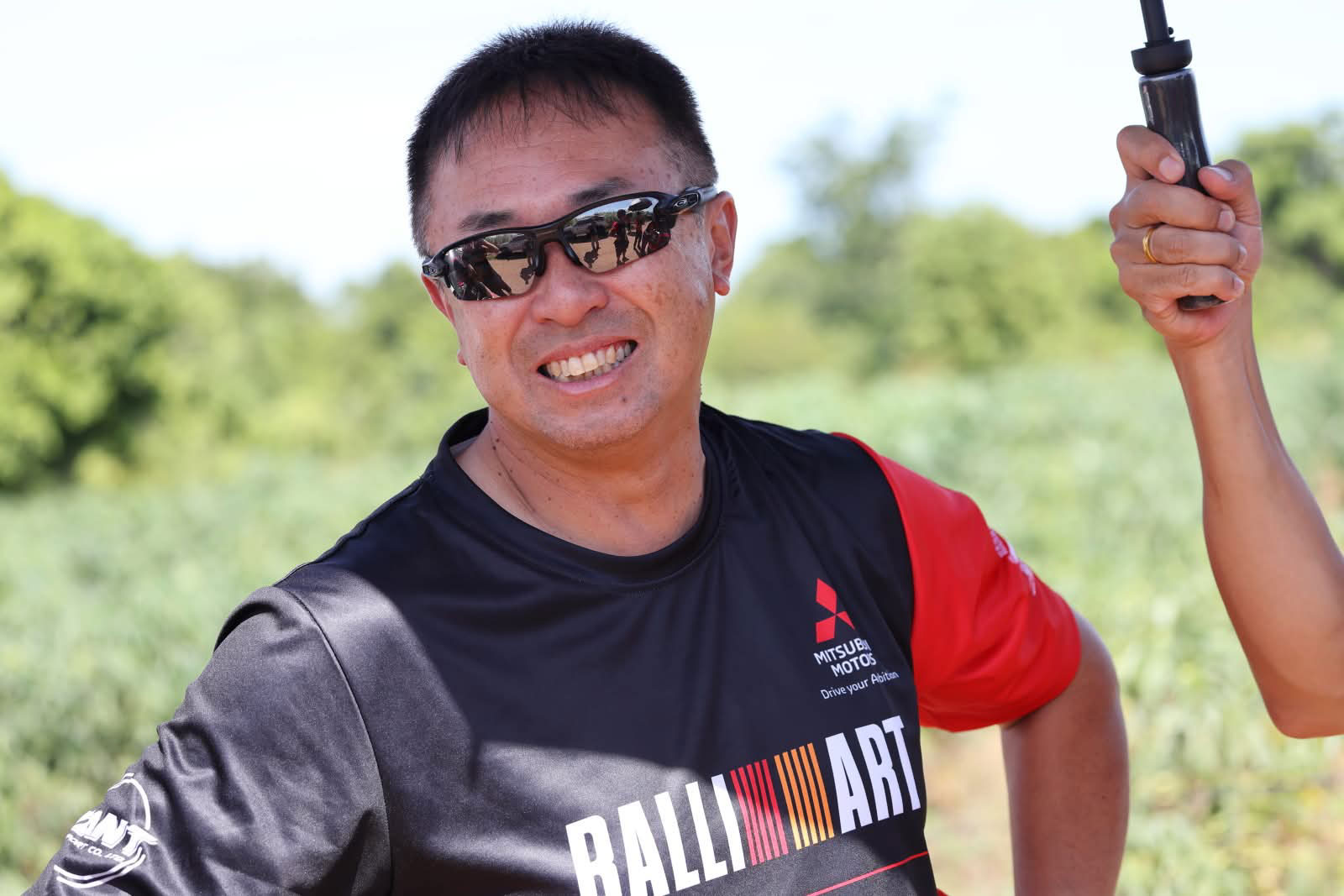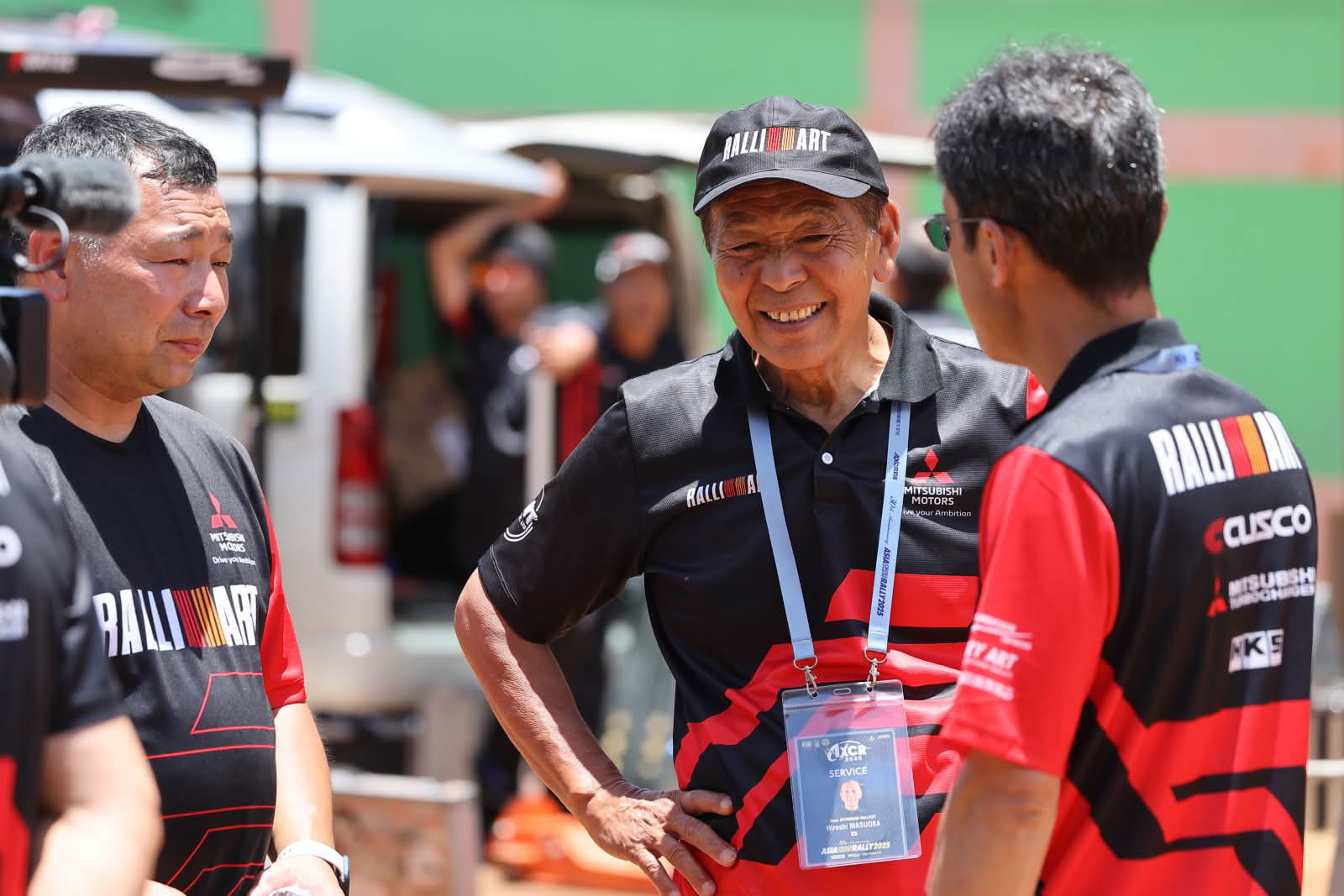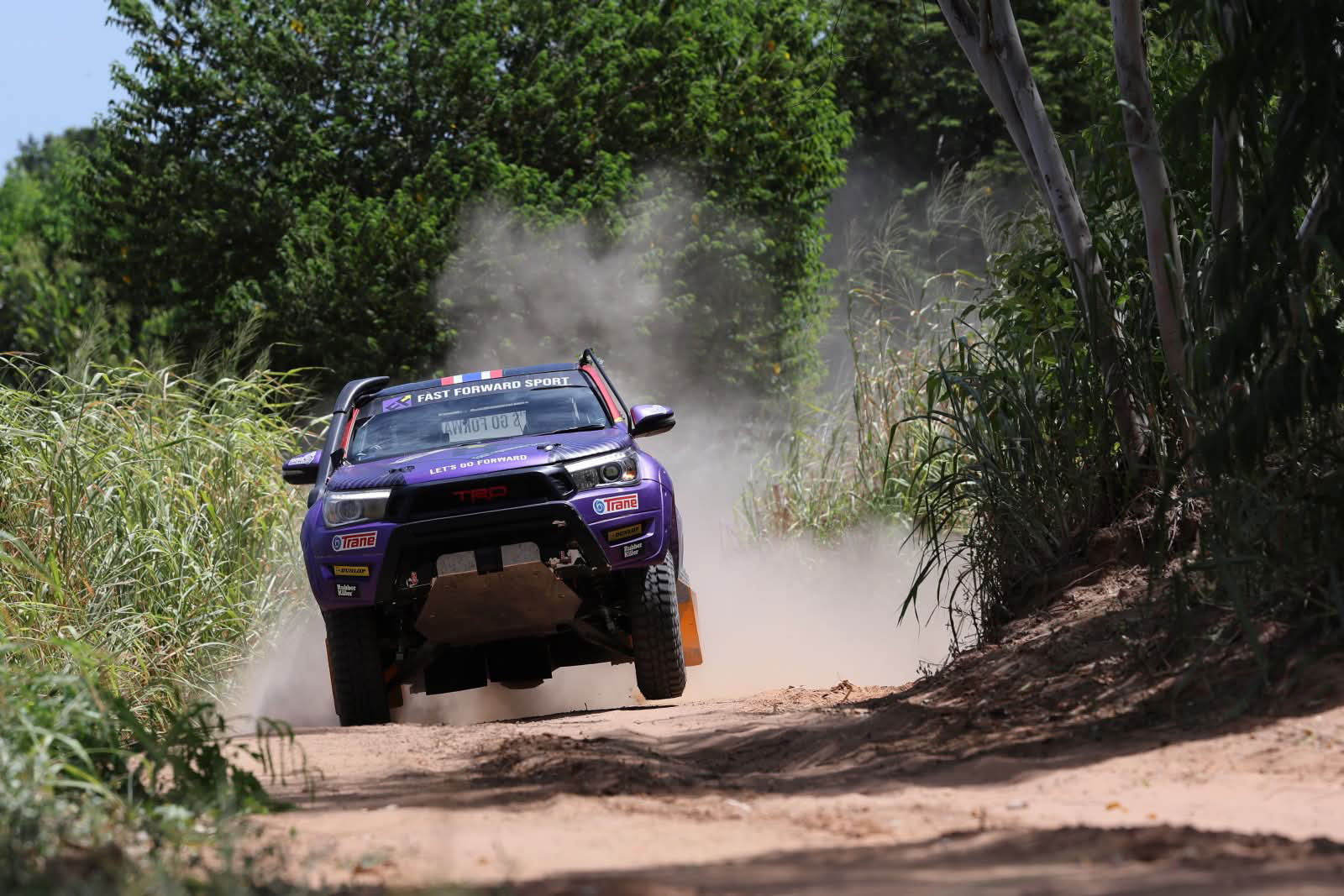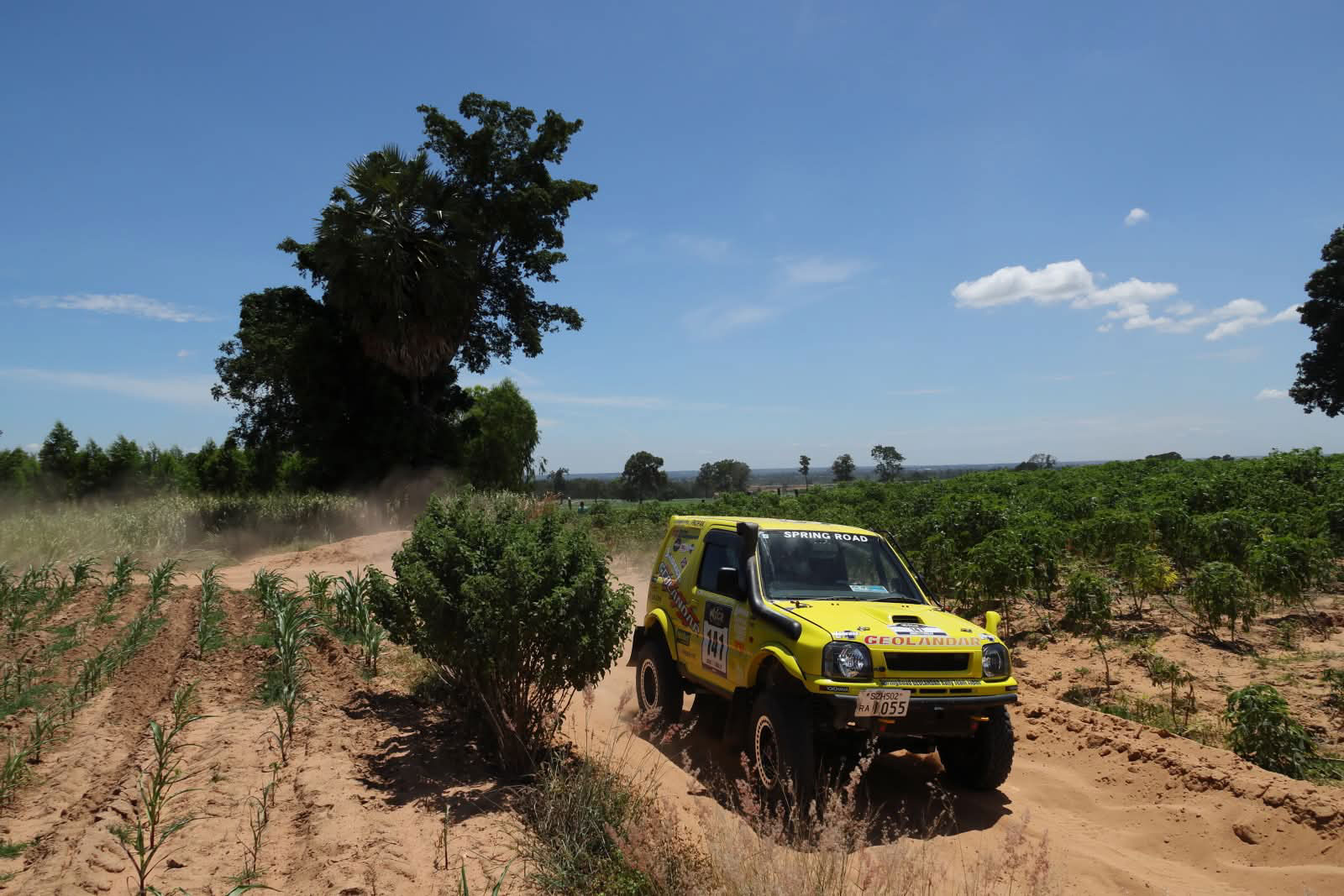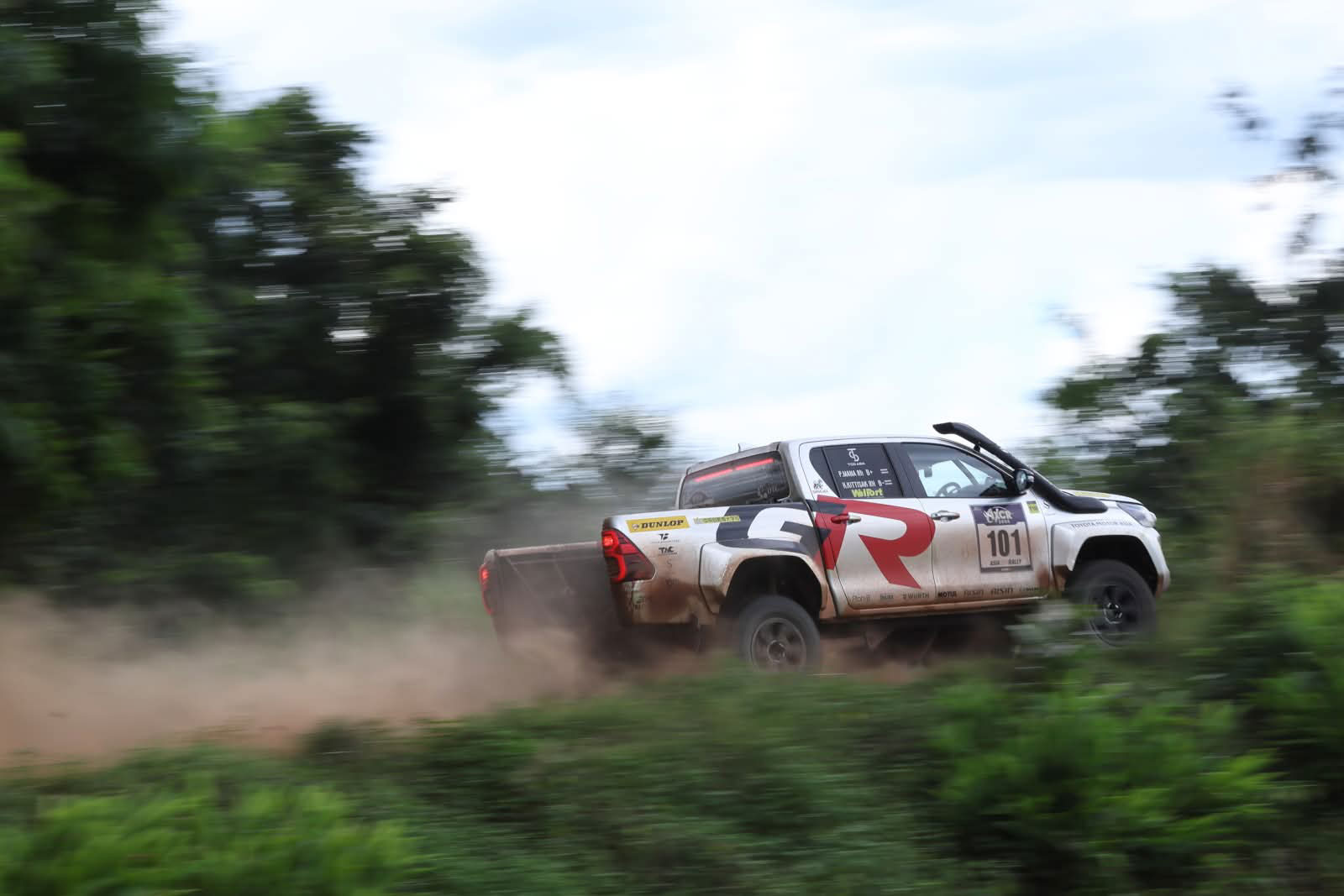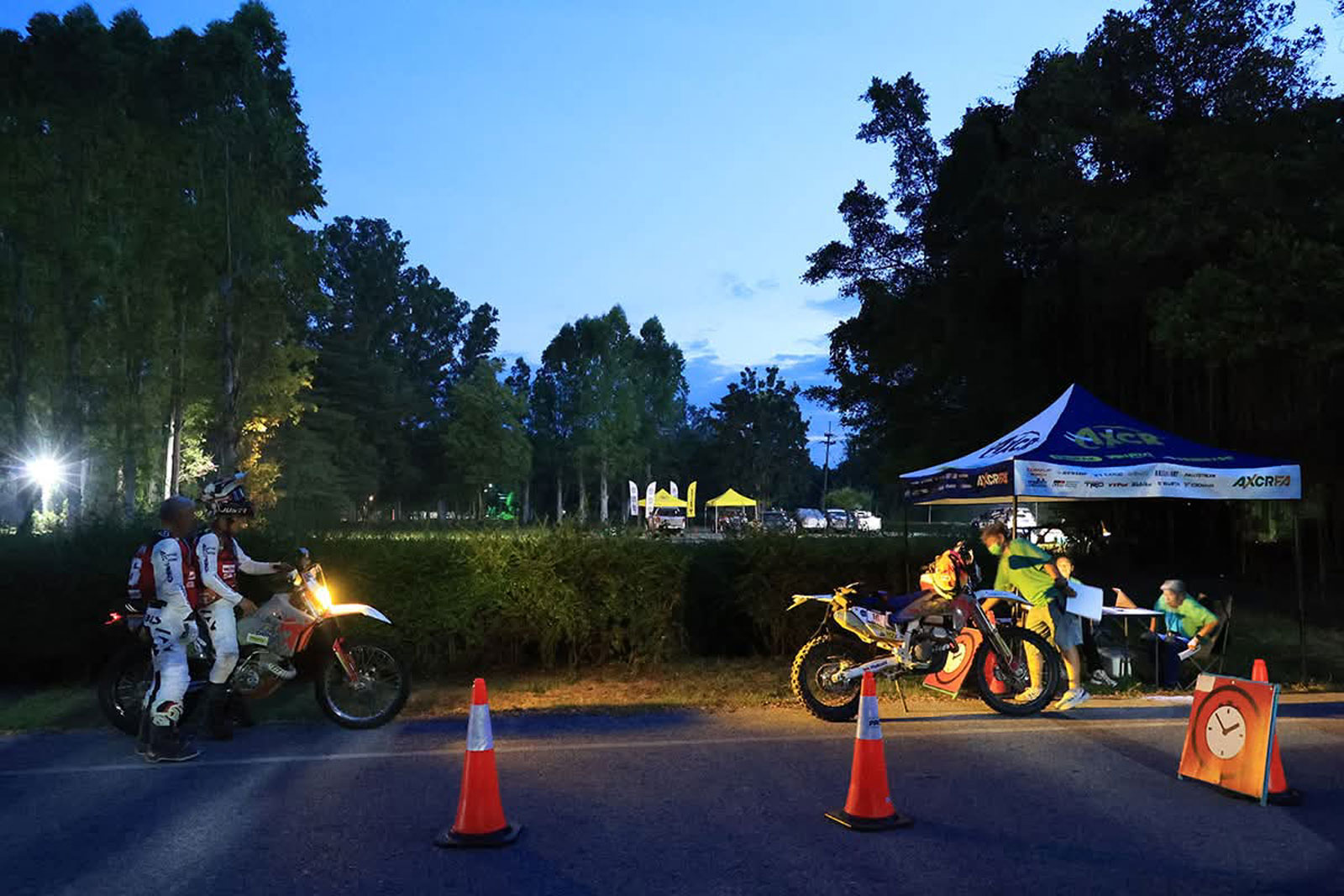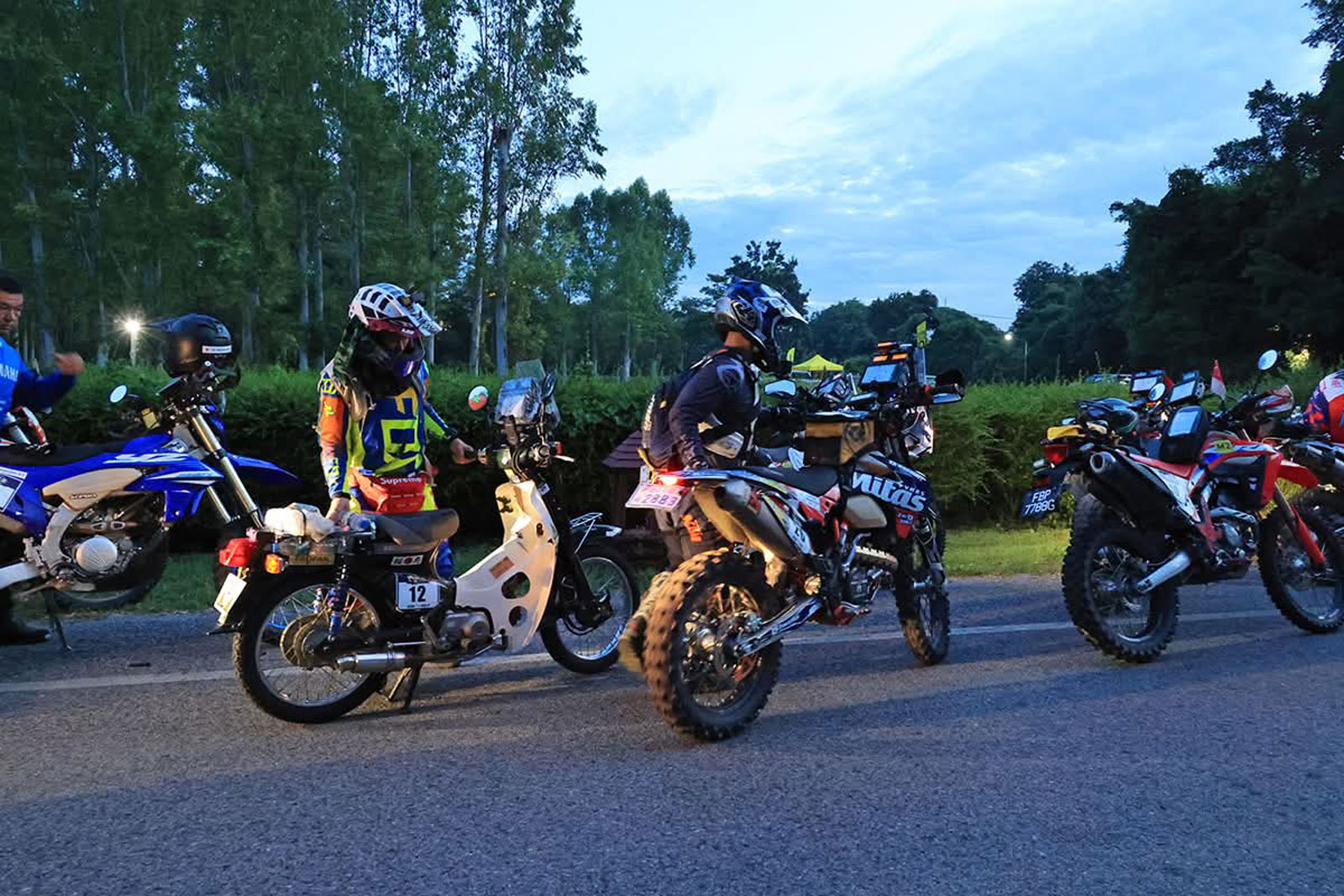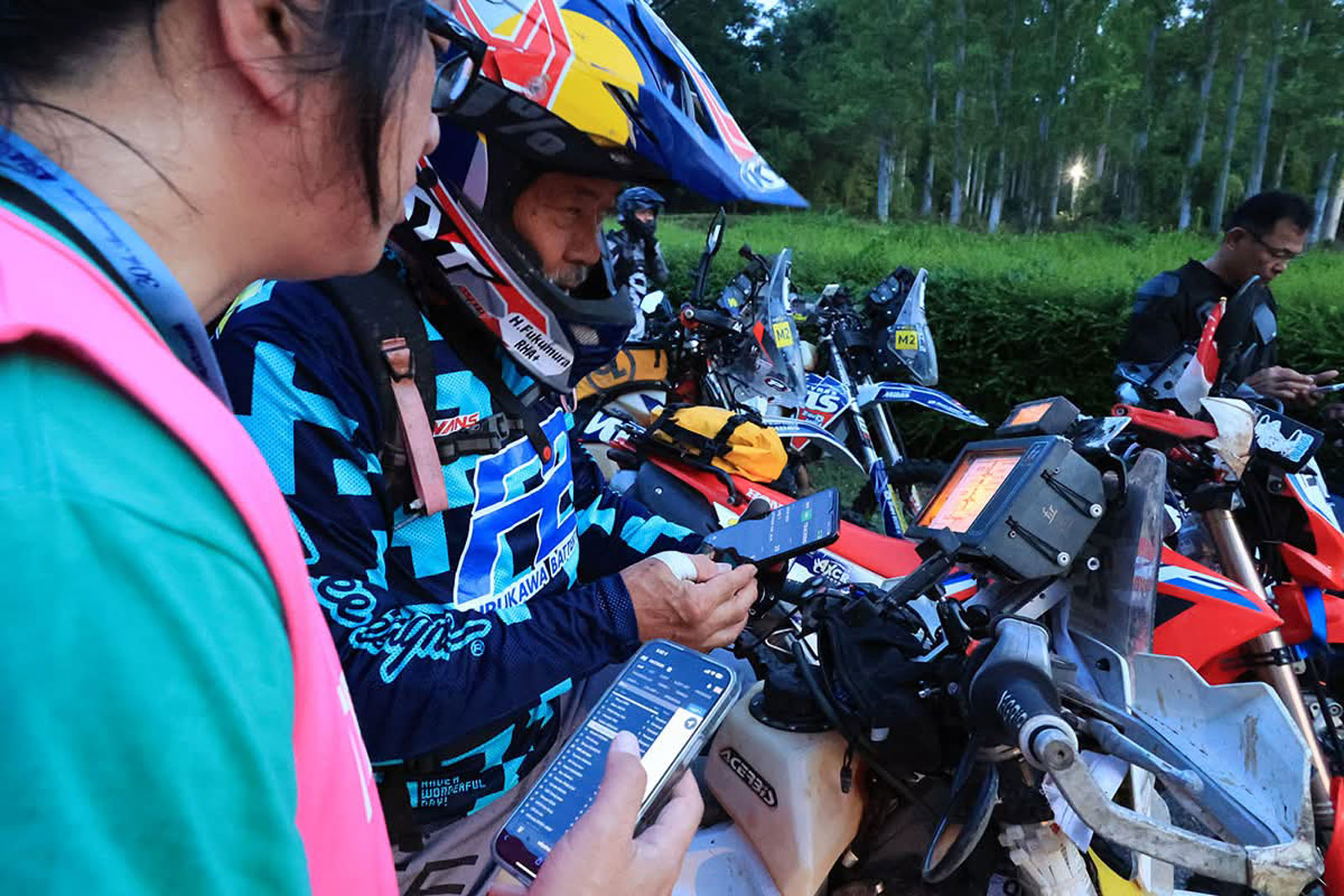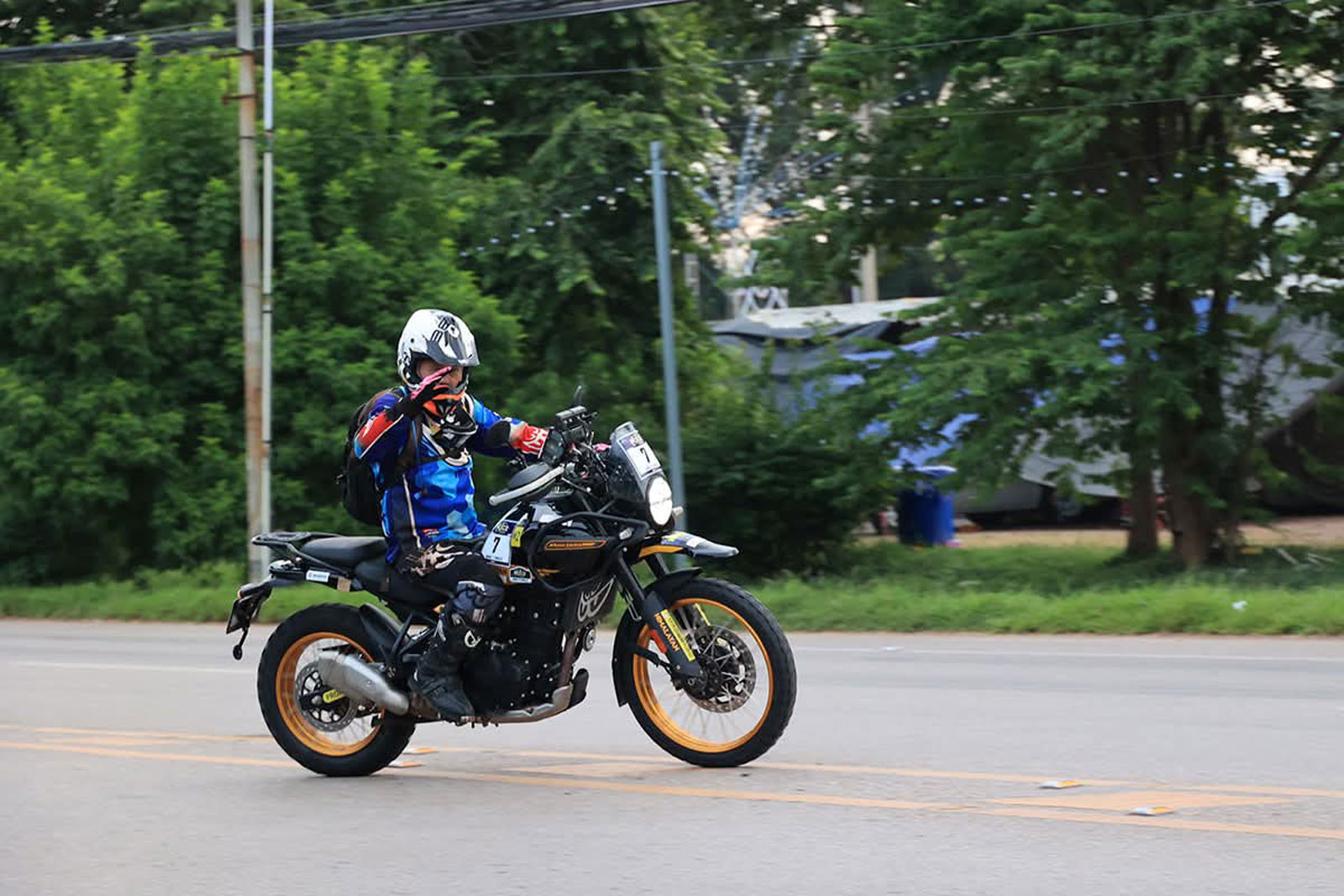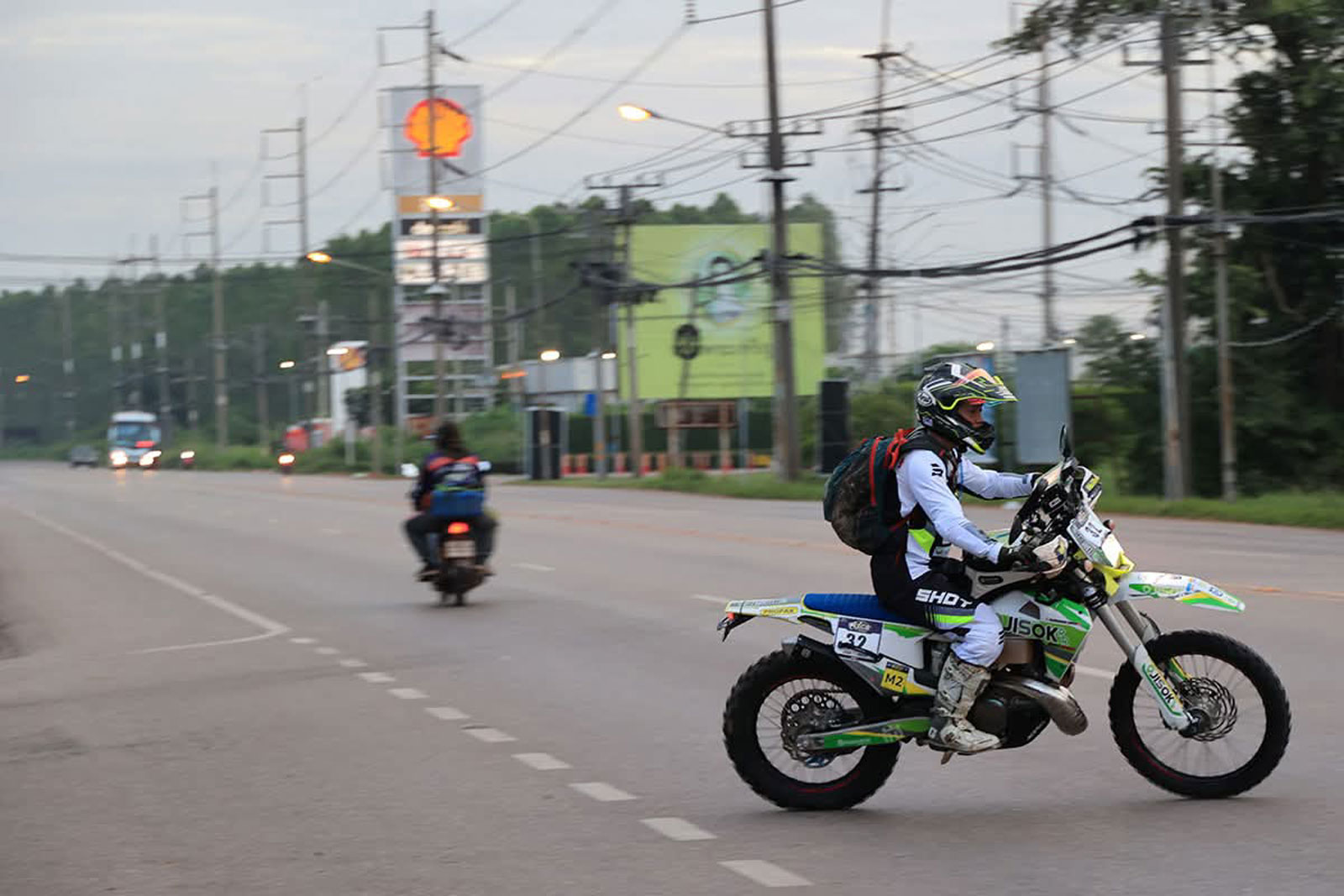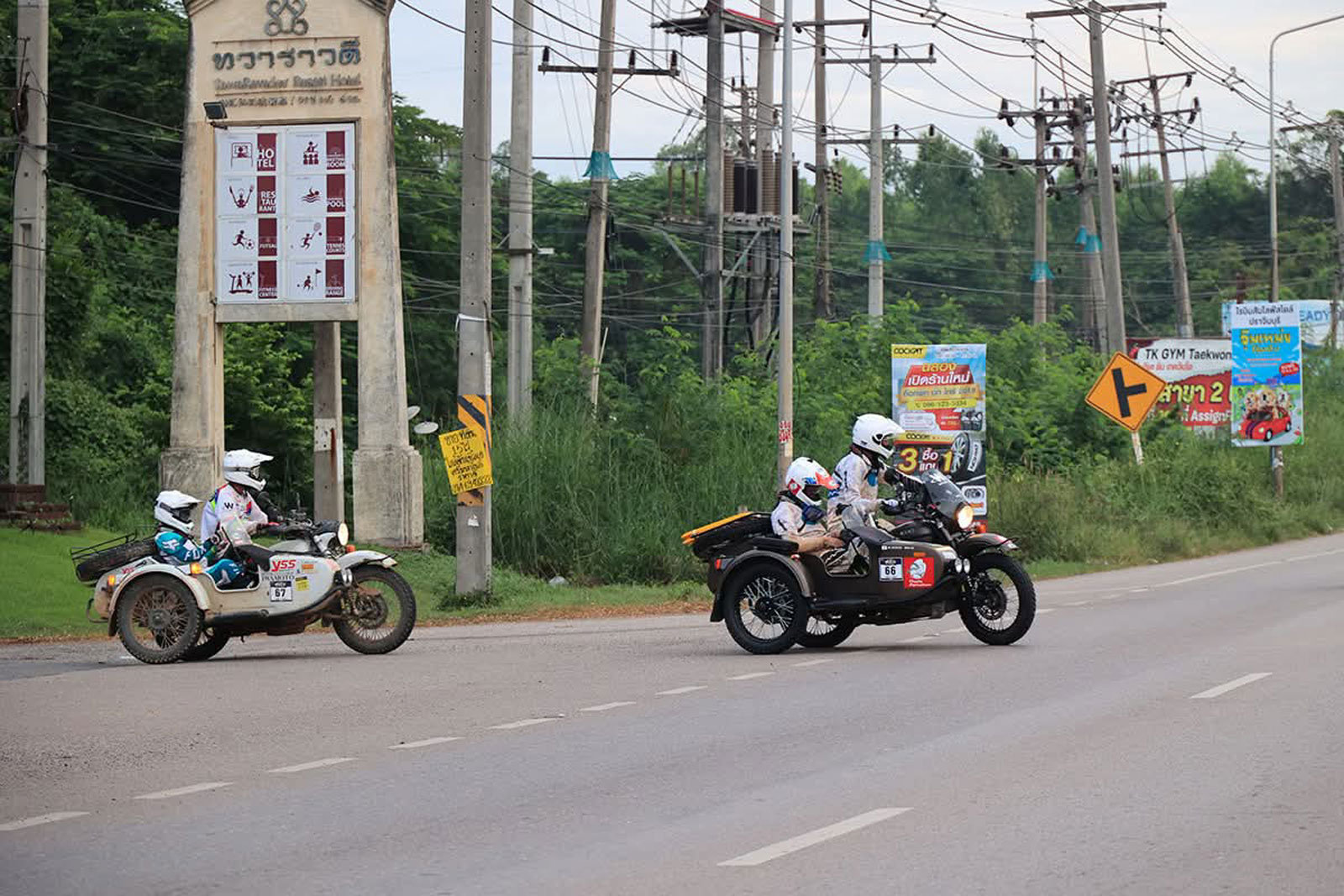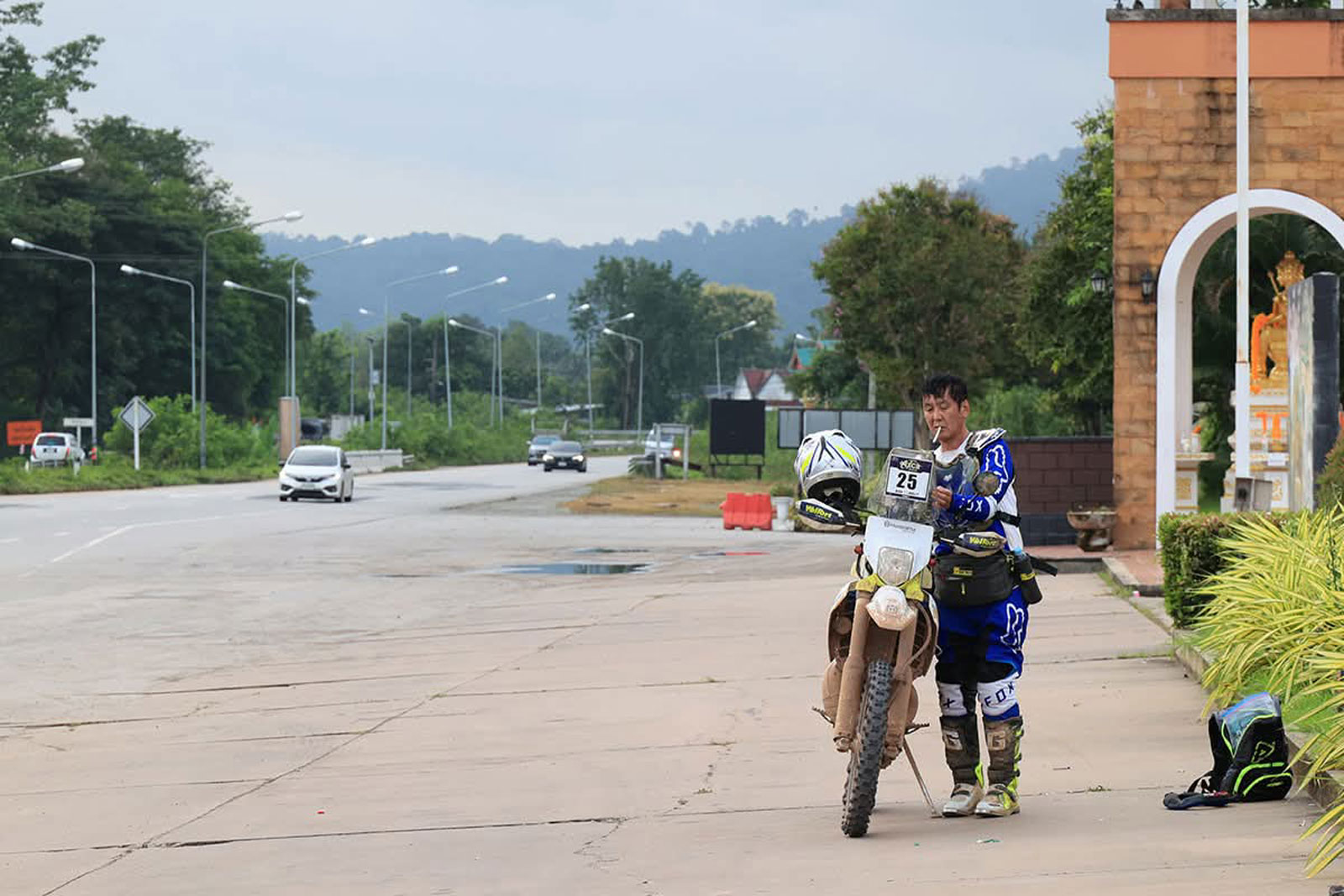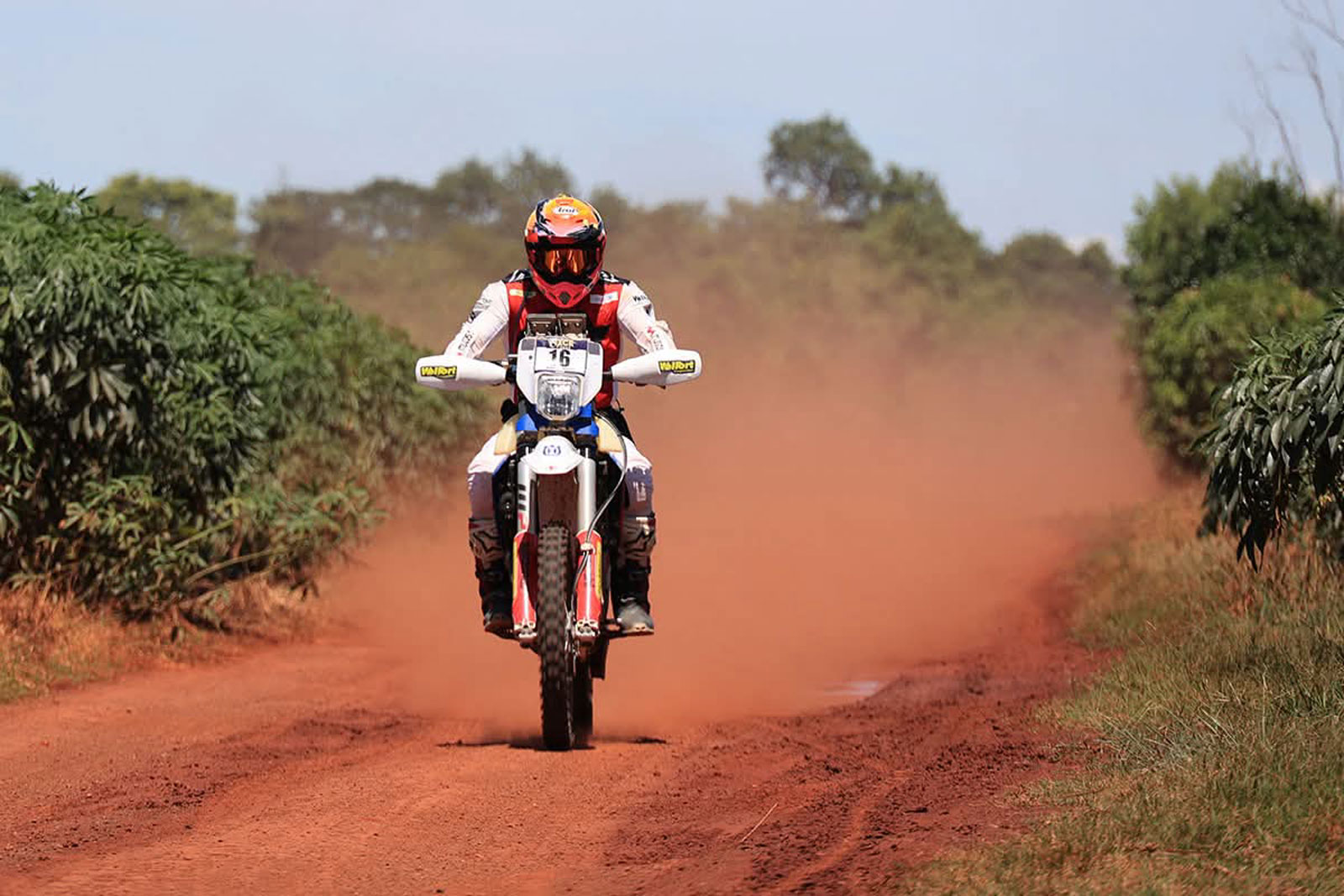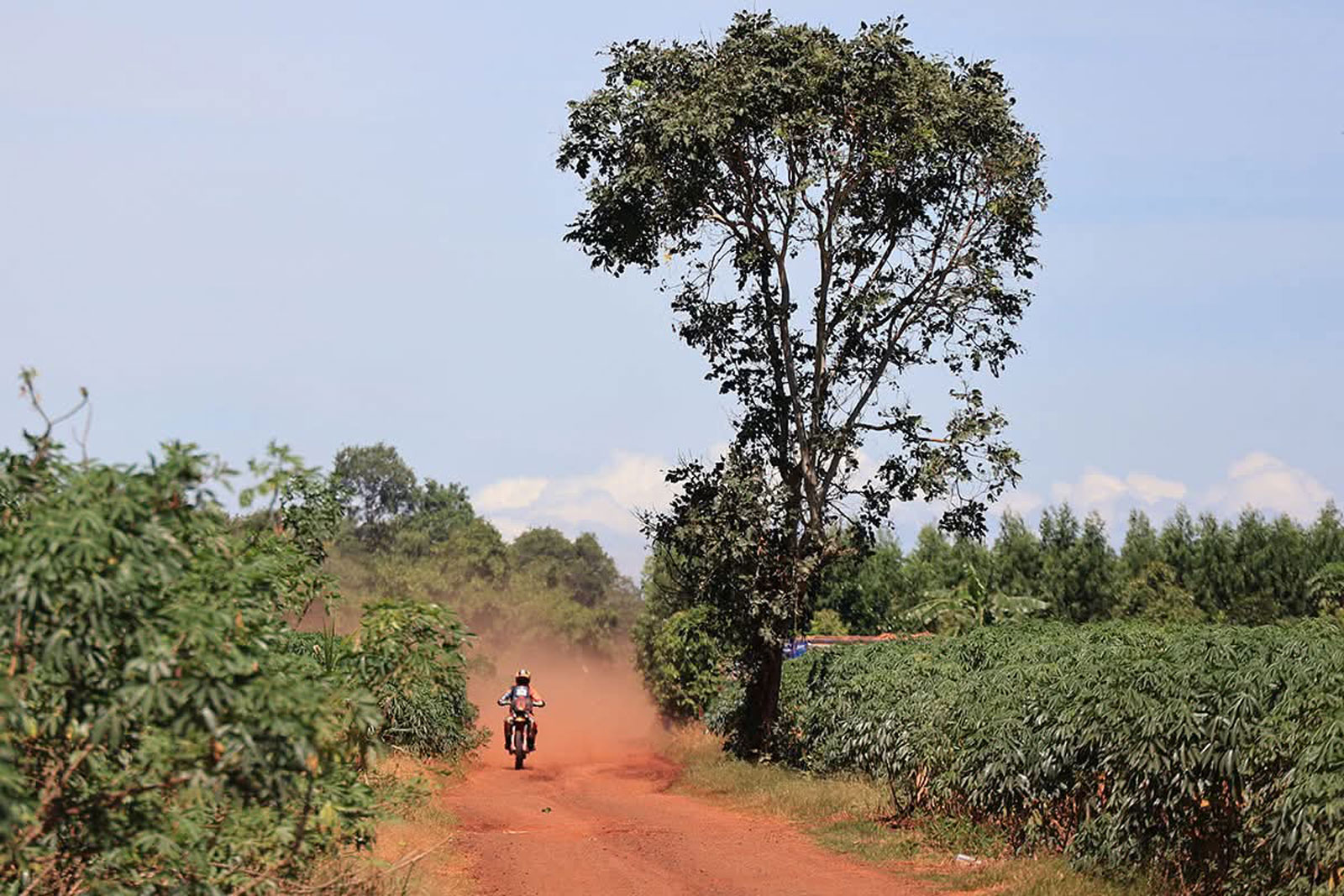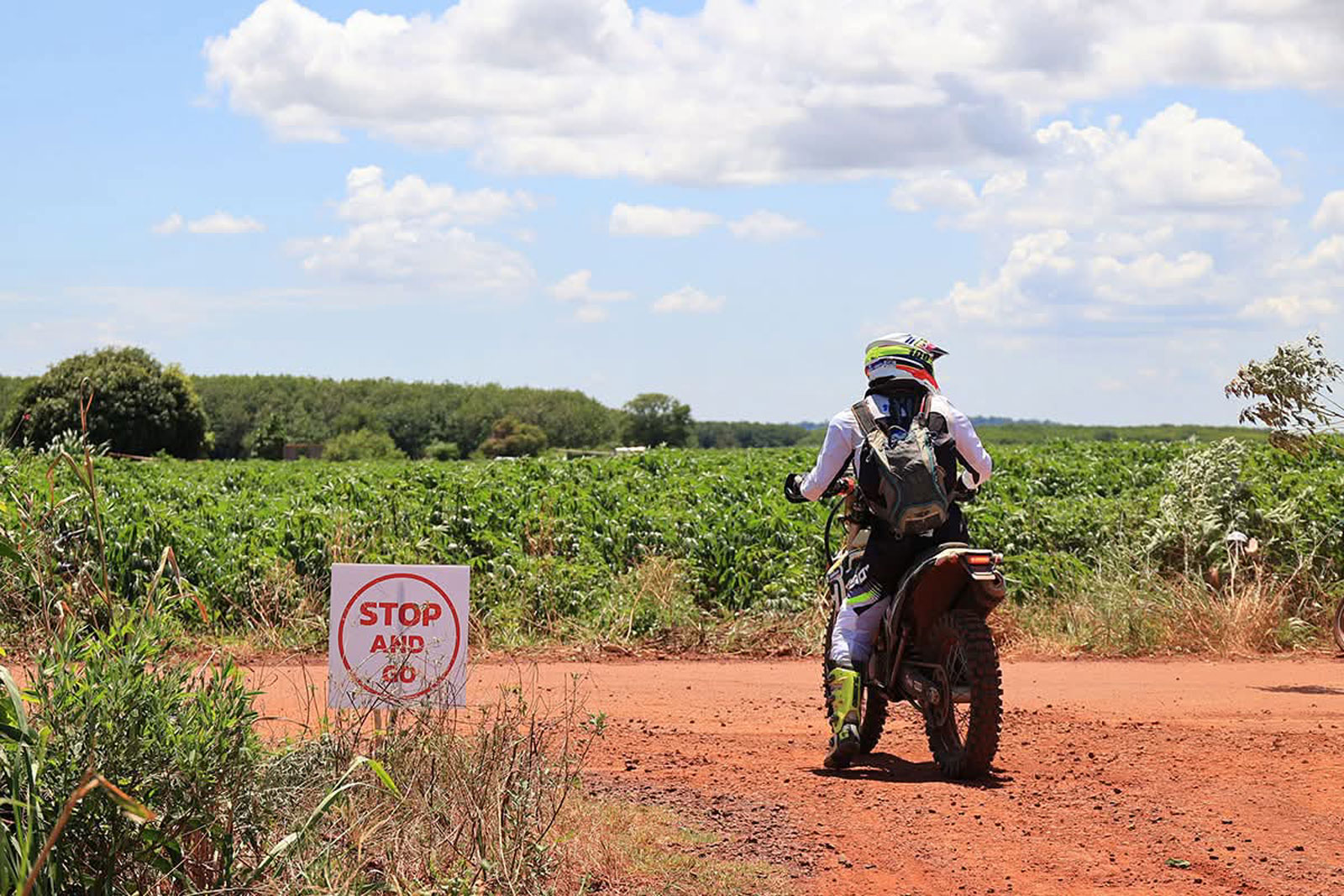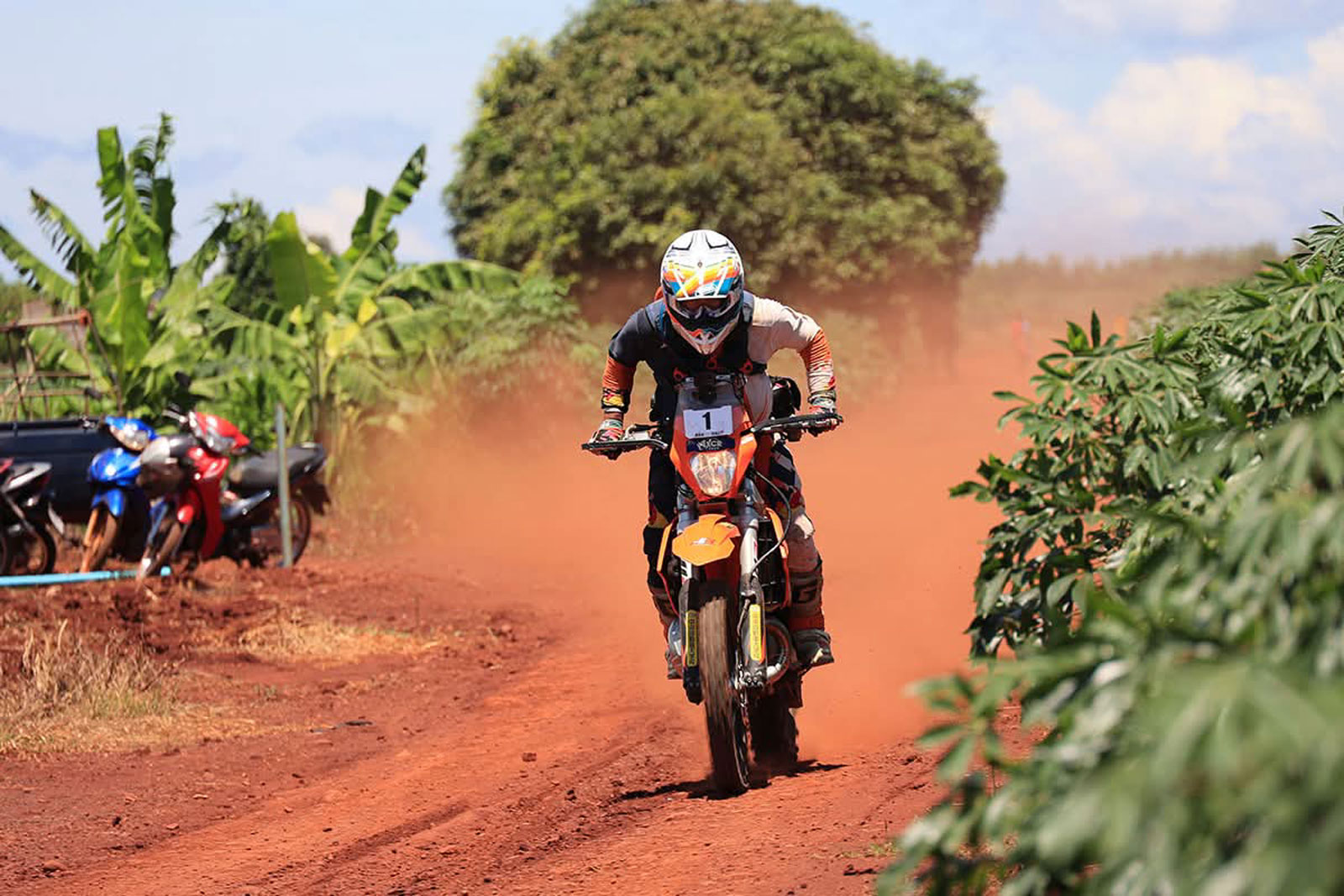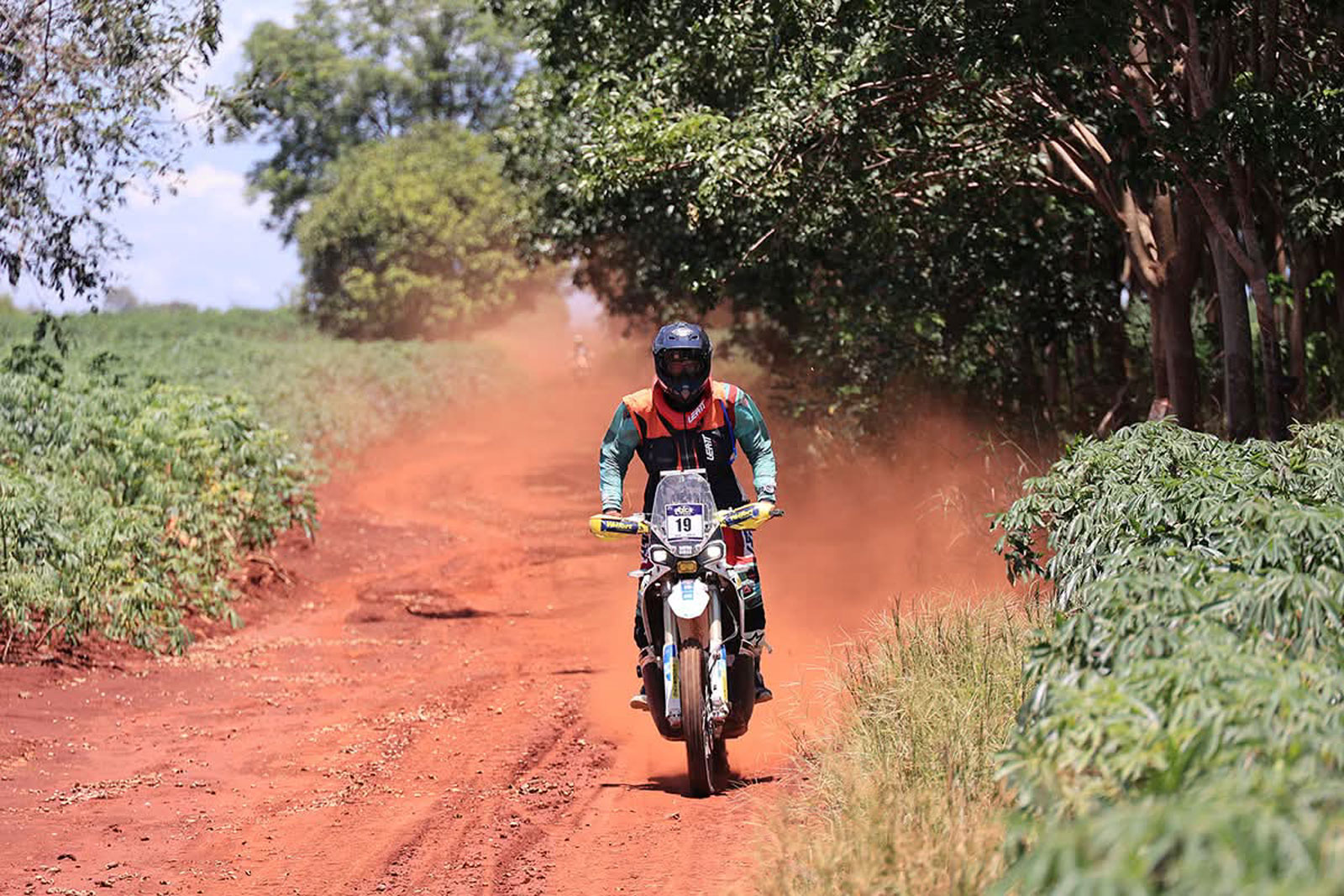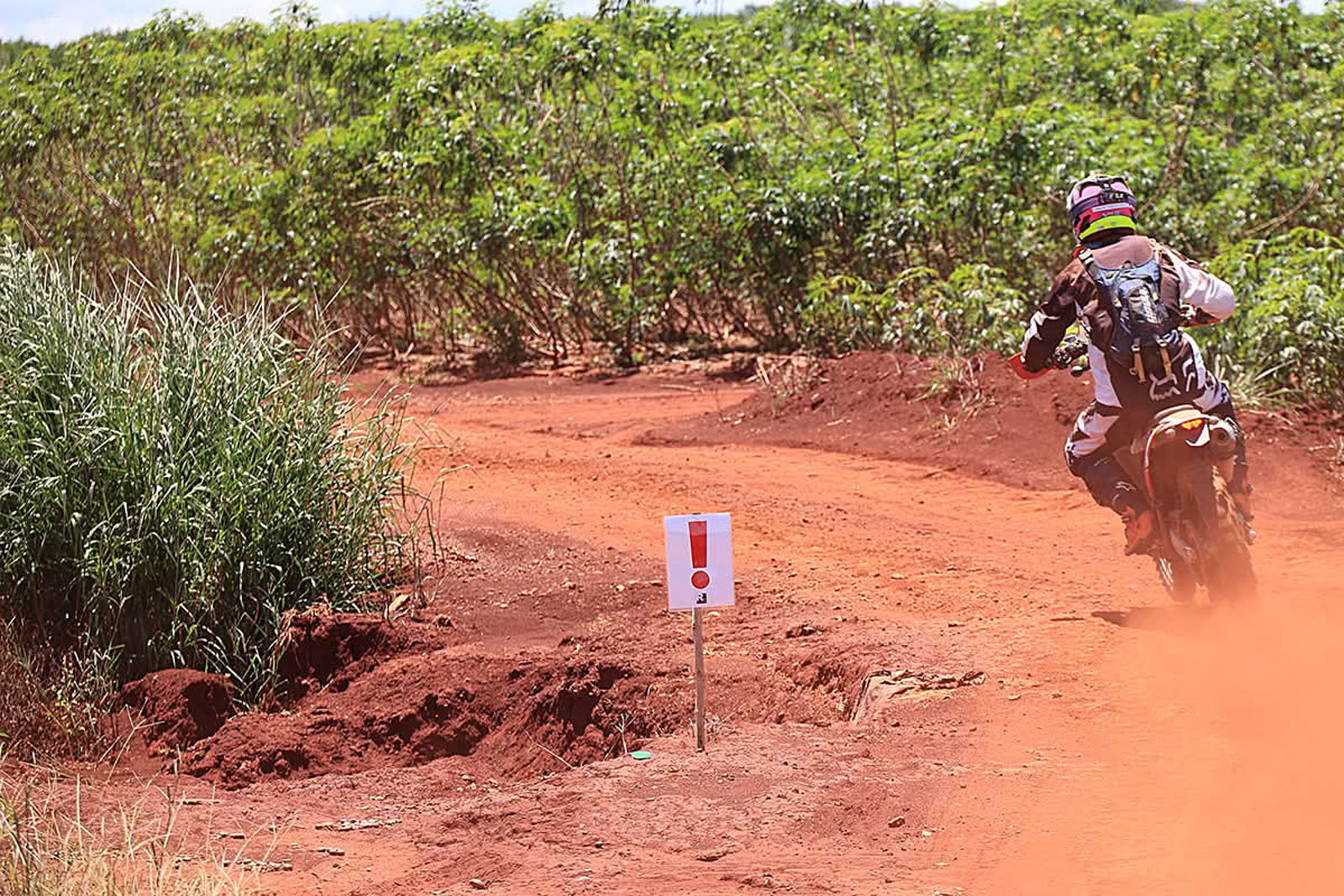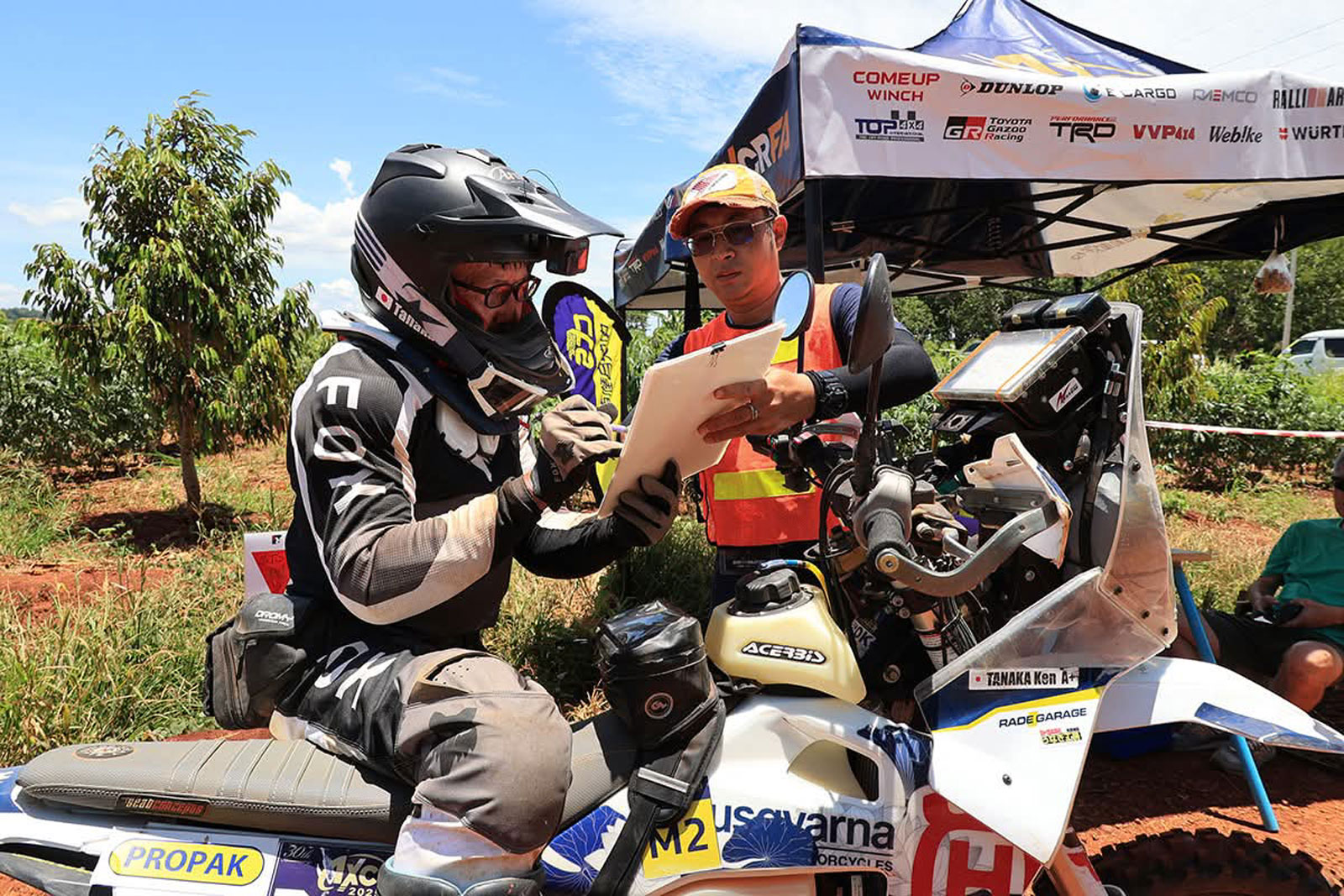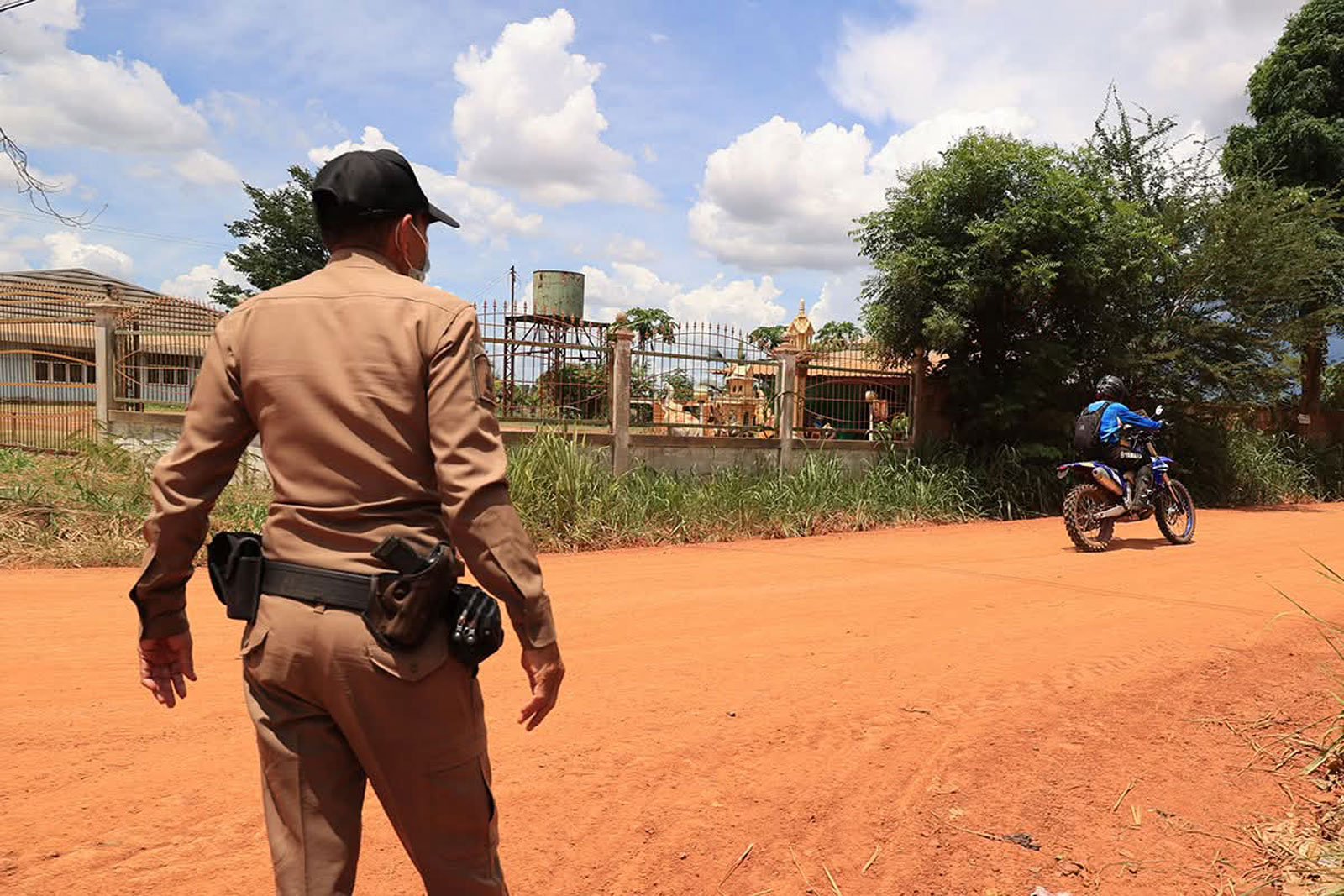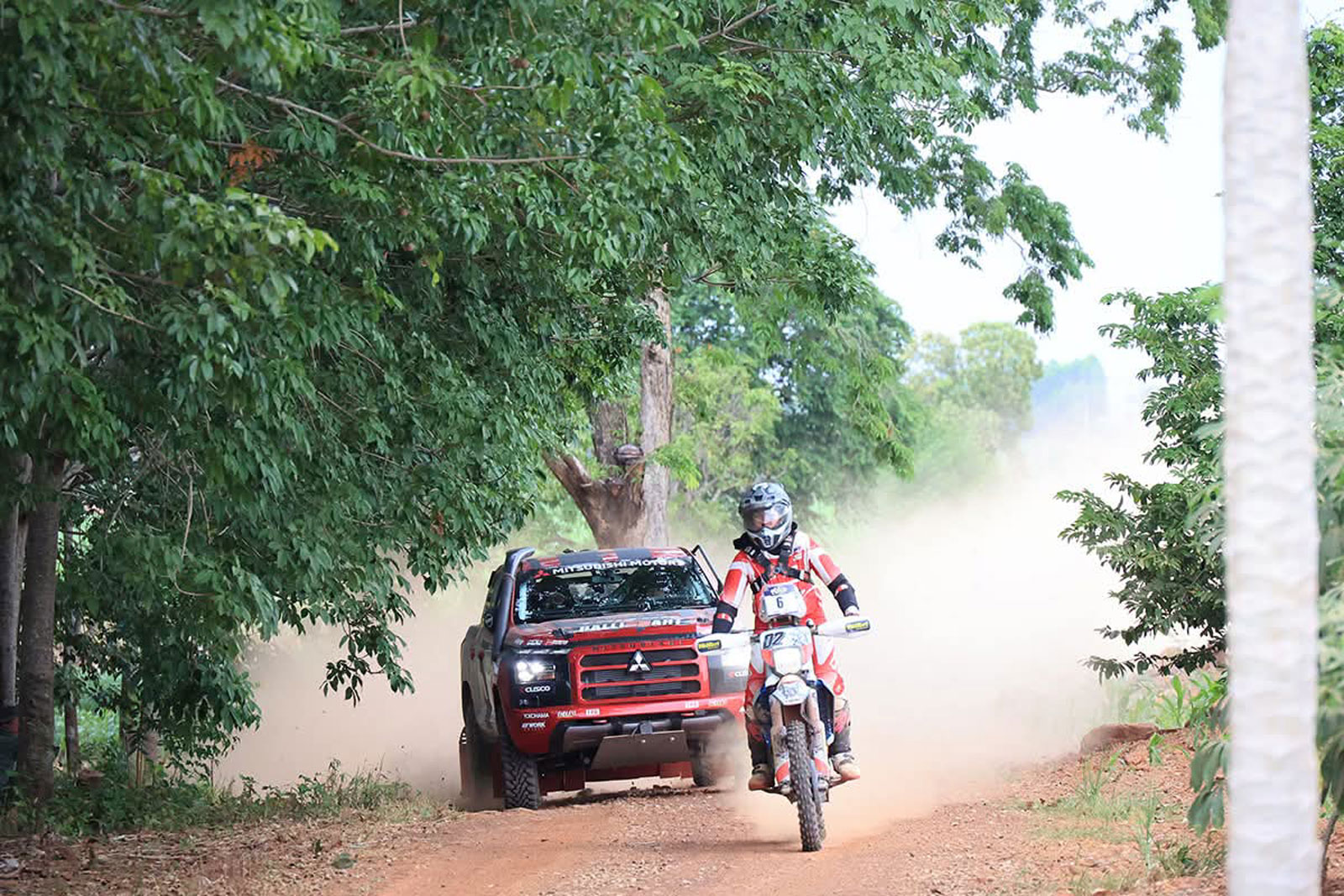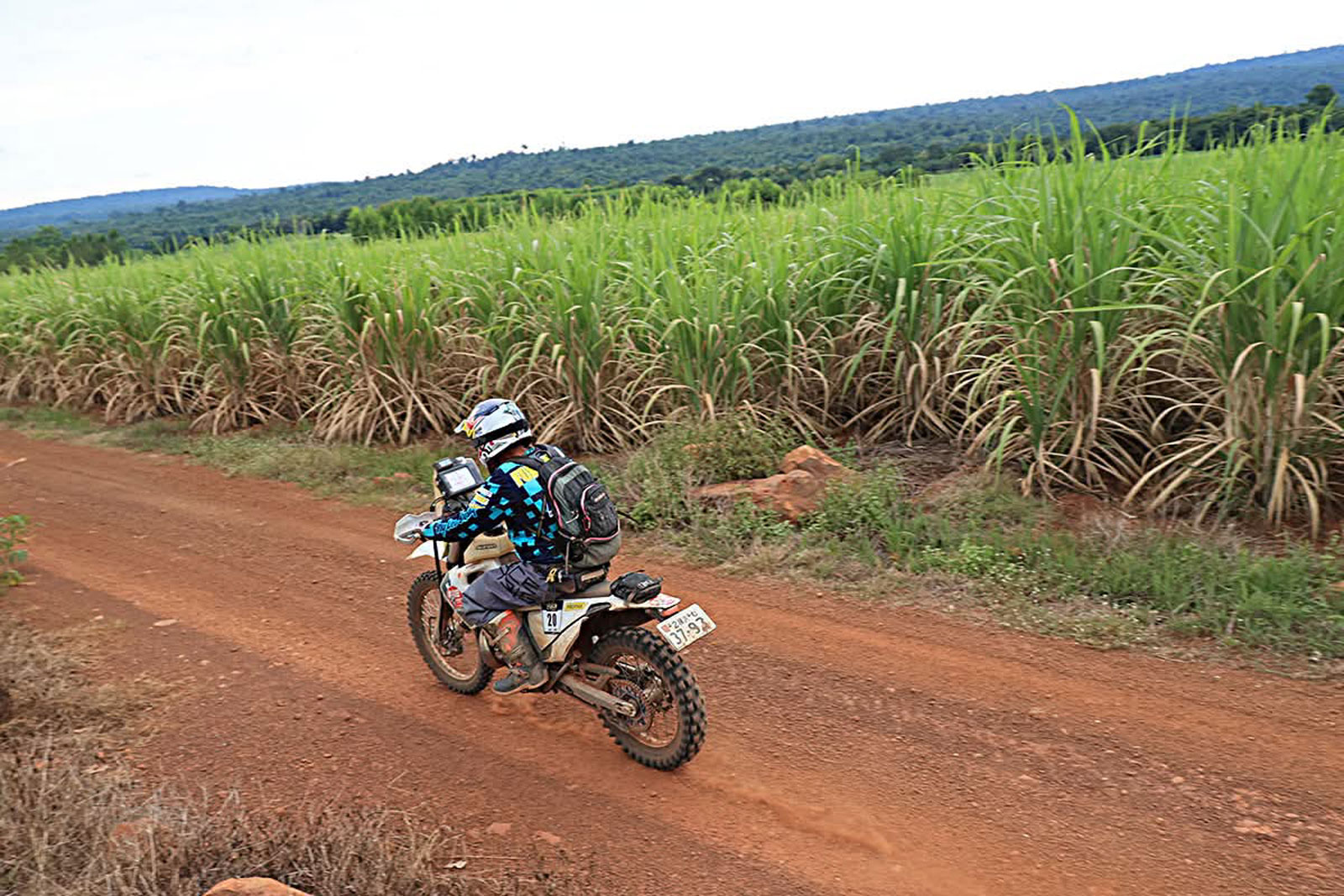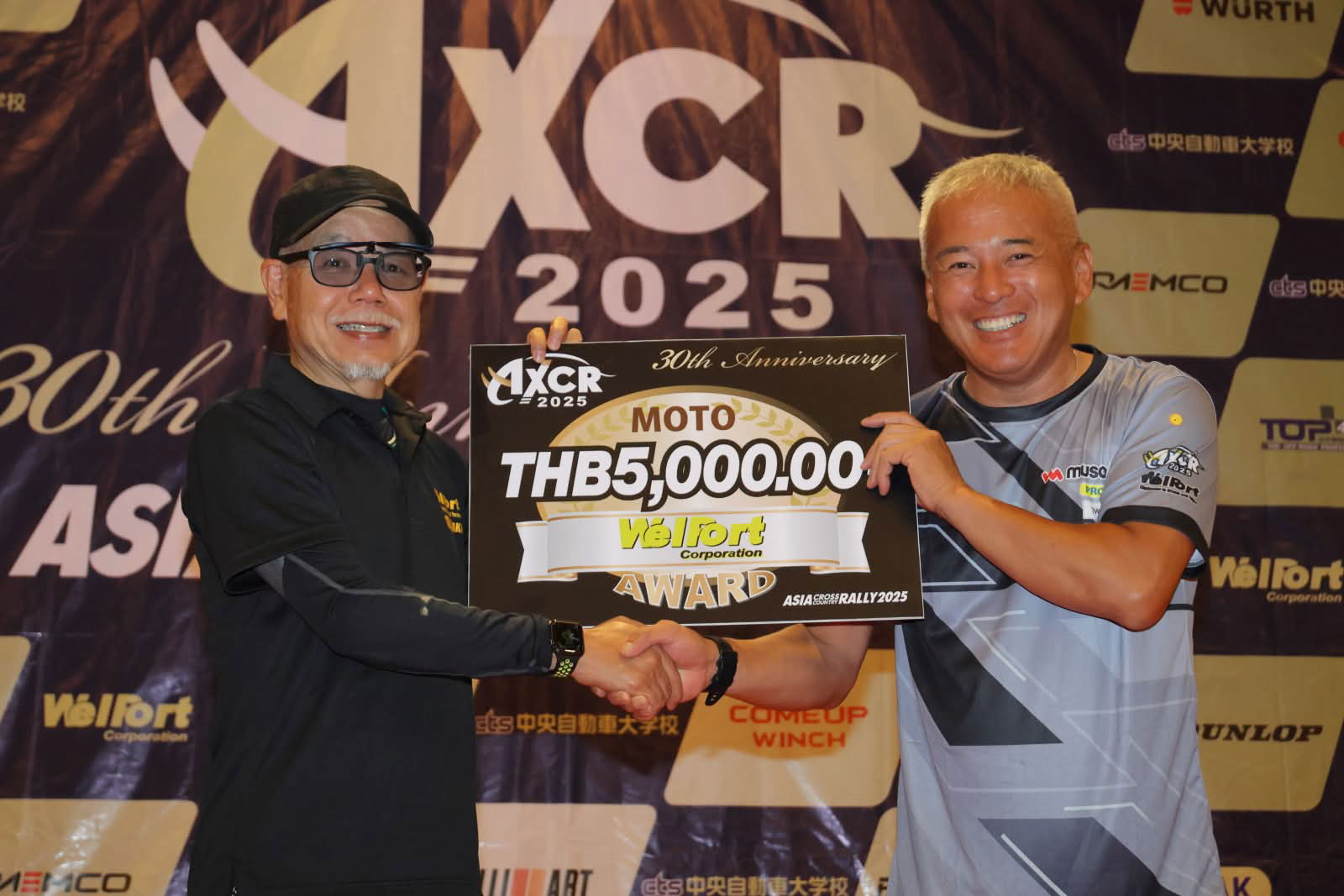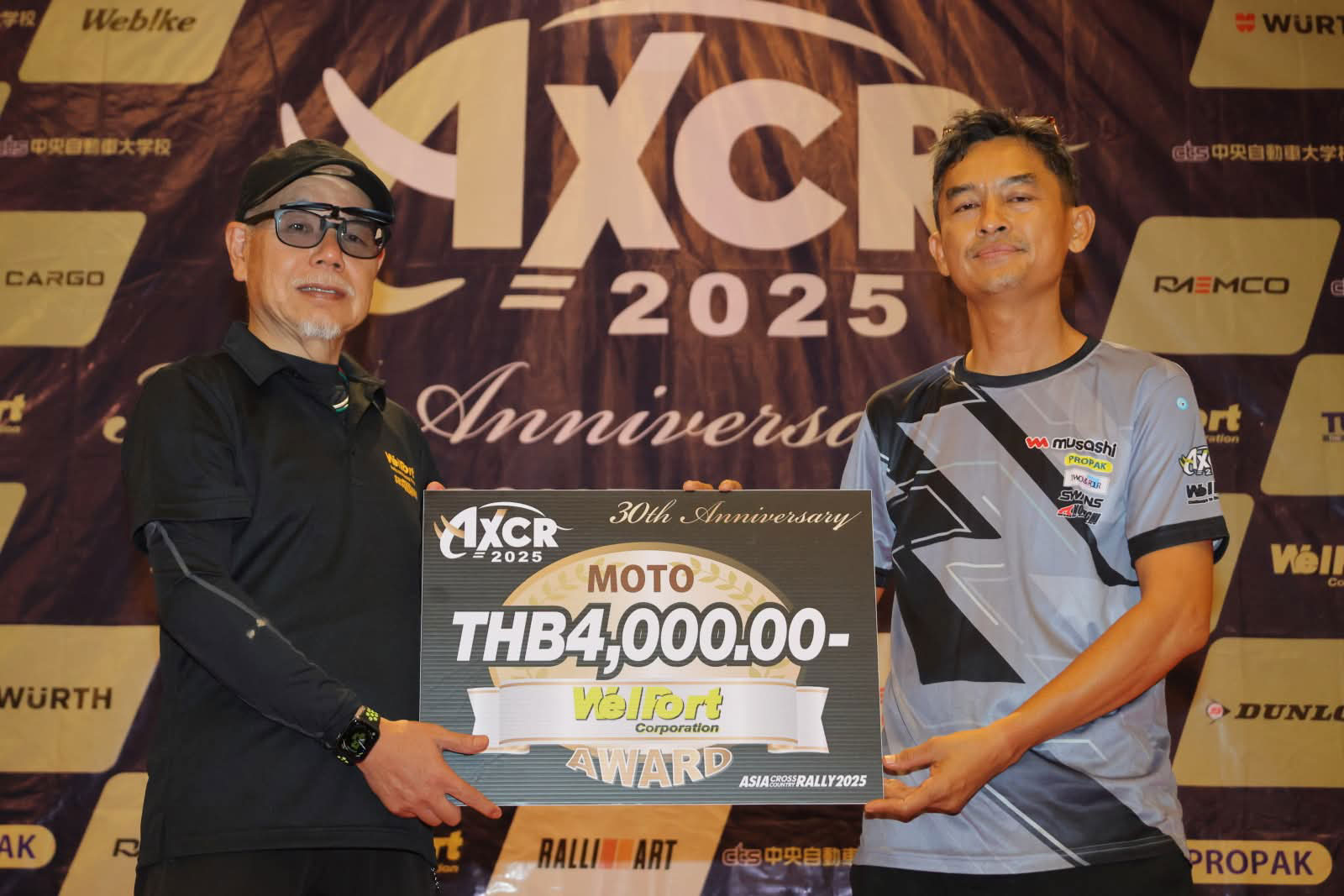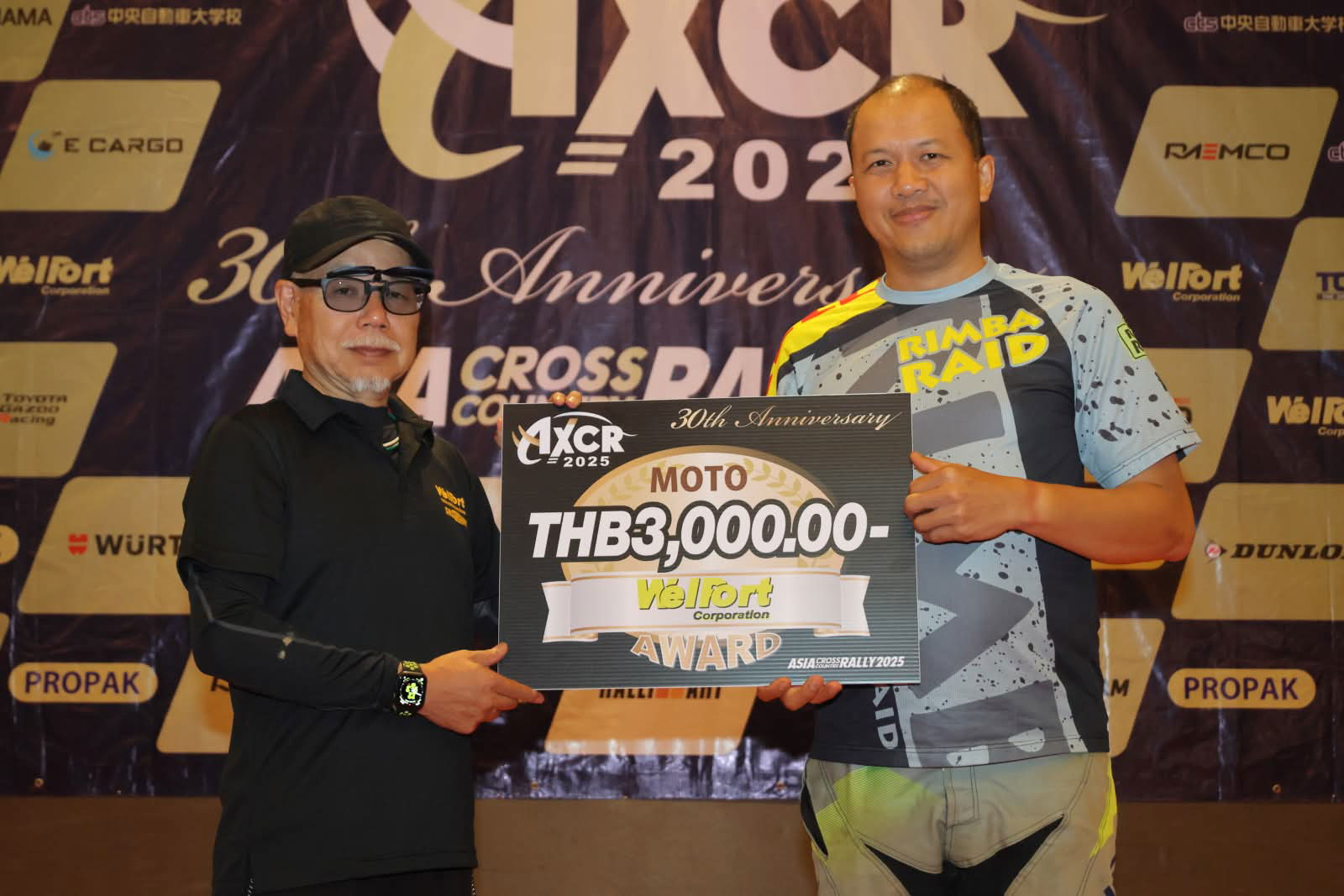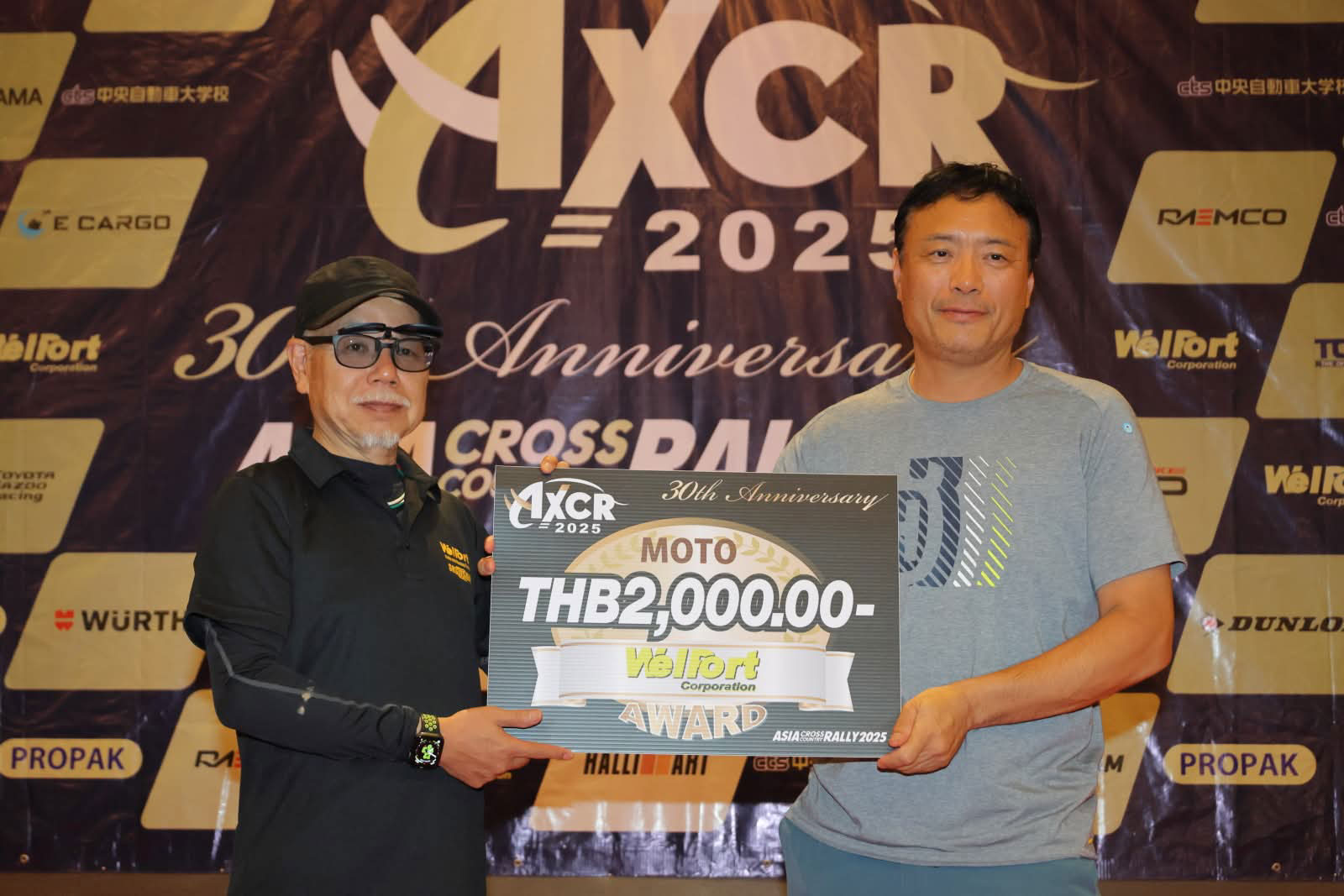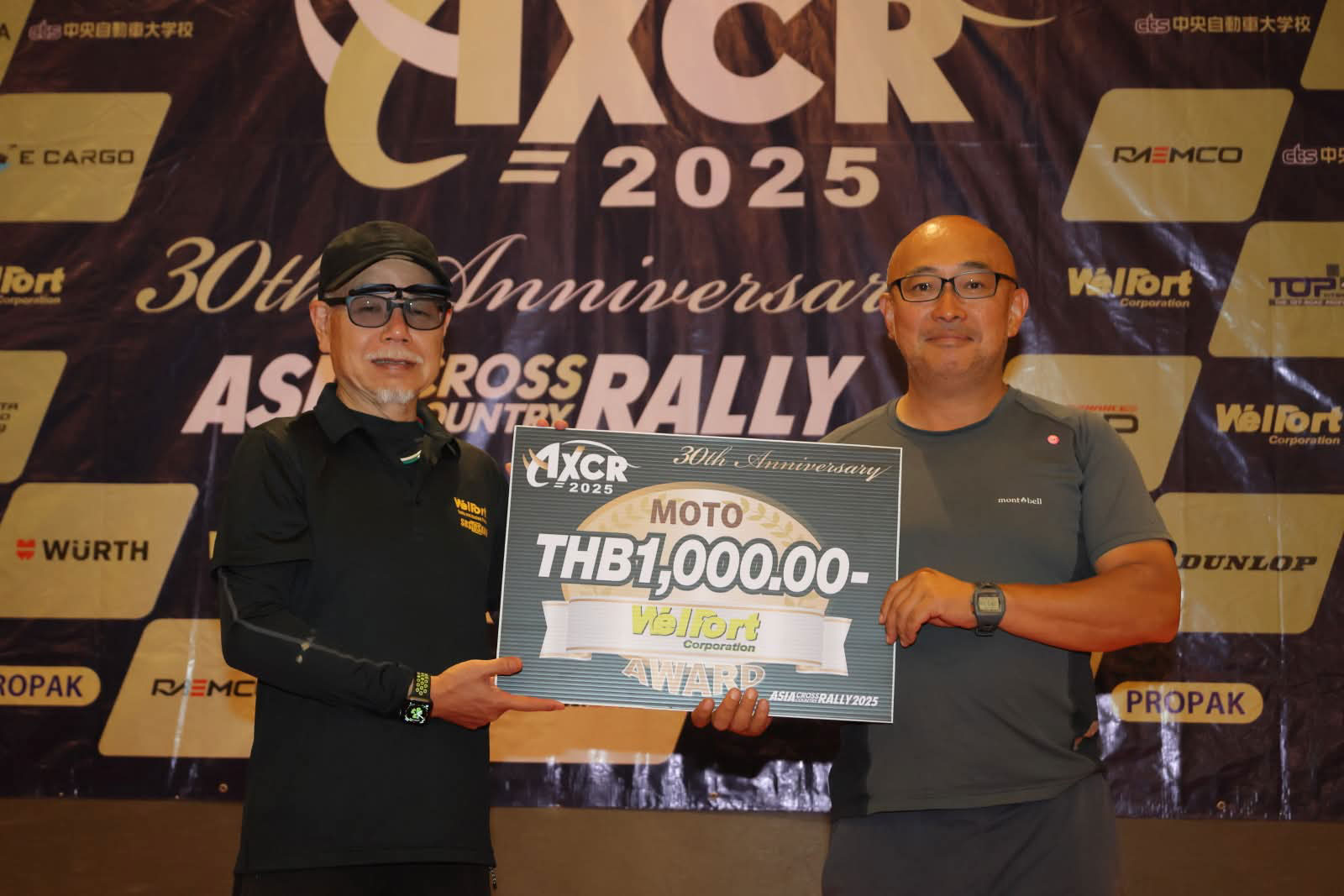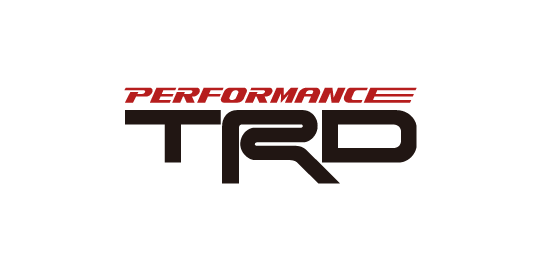

LEG2
Sunday, August 10, Khao Yai
On the narrow and intense rocky road plateau
A battle for survival in the early stages
The rally entered its second day with a 500 km route from Prachinpuri to Nakhon Ratchasima in Khao Yai National Park. The special stage was 177.85 km long and the road section was 322.56 km long.
Unfortunately, LEG4 and LEG6, which are close to the Cambodian border, have been cancelled this year for safety reasons due to the proximity to the border.
In a change from yesterday's muddy conditions, a rocky section awaited the entrants on this day. From the start, the first 44km of the route ran through a cassava plantation, with two and three sections of rocky, ditchy, undulating slopes that seemed to go on forever.
The track is narrow, uneven and severely rutted. If you go too fast, you can damage your suspension in many places. Rocks protruding from the road surface are sharp and put a lot of strain on the tyres. There are also rocks and stumps hidden in the bush in places, and if you are not careful, you will fall prey to these natural traps.
However, it was not all low-speed sections where we had to drive carefully; there were also high-speed sections in the second half of the race after the PC stop. In these conditions, the riders had to decide where to slow down and where to fully open the throttle. In a competition where every minute counted, each team had to manage their own intuitions with their throttle and steering inputs.
Sure enough, some were caught in rocky dips, while others who were more unlucky ended upside down after hitting stumps. Some cars fell off the side of the road, while others damaged their suspension or cars. On this day, 25% of the cars were penalised for almost 10 hours for not passing the SS, and an unimaginable war of attrition unfolded from the early stages of the race.
The top 12 cars completed the race in less than three hours. In addition, the daily top time of 2 hours, 36 minutes and 38 seconds was achieved by the Toyota Fortuner of #122 TOYOTA GAZOO RACING INDONESIA.
Tubagus Adhi Moerinsyahdi (INDONESIA) and Jatuporn Burakitpachai (THAILAND) are talented drivers who finished second overall in their first appearance in 2023, but the Fortuner, which is smaller than the pick-ups, probably suited the narrow mountain terrain better. It was a great drive that catapulted it from eighth to third place overall.
Pickups and SUVs in the Asian market continue to get bigger and bigger with each passing year, but when it comes to country roads deep in the mountains, they are a little oversized. In fact, on this day, there were a few occasions when smaller underdogs such as the #146 Showa Garage Racing Jimny were chasing down the more powerful pickups in front of them. In such narrow and uneven terrain, being able to 'pick your line' is an important performance feature.
The second car to watch out for was the Mitsubishi Triton of Chayapon Yotha (Thailand) and Peerapong Sombutwong (Thailand) in the #112 MITSUBISHI RALLIART. 4 years ago, Chayapon claimed his first victory, and even from the outside, his driving was smooth and stable.
The 2.4-litre diesel turbo engine is inferior to the 2.8-litre engine of the rival Toyota Hilux in terms of displacement, but its speed when accelerating uphill is comparable. Its light and agile behaviour is a good match for the narrow route. Up close, it has a very racy feel to it, combined with the high-pitched sound of the competition-specific sequential manual gearshift.
In contrast, the rival Hilux team topping the field was, Natthaphon Angritthanon (Thailand) and Thanyaphat Meenil (Thailand) in the #113 TOYOTA GAZOO RACING THAILAND. Natthaphon's driving is never speedy or flashy when seen up close. However, his consistency is tremendous and he is perfectly optimised for cross-country rallies where the goal is to finish the race.
The team's navigation skills are also excellent, and the way they "find themselves" at the top of the field is still present in this year's rally. Driving the heavy Hilux in the narrow mountainous terrain and setting a good time just six minutes behind the leader is nothing short of impressive.
Incidentally, the TOYOTA GAZOO RACING THAILAND machine has a different suspension specification to the production cars. The engine is mainly tuned by computer which, is almost the same as ECU tuning available to the general public, and this shows that Toyota is focusing on a wide range of general competition users.
In 4th place was the #105 Team MITSUBISHI RALLIART team of Katsuhiko Taguchi (Japan) and Takahiro Yasui (Japan). Last year, the duo did well to finish 5th overall, but their understanding of the local conditions, such as the unique terrain and climate of Thailand's cross-country rallies. Their lack of experience on this terrain stiffled their quest for higher positions. As the geography is different from that of Japanese rallies, they made an expedition this year to Thailand and trained mainly to improve their navigation accuracy. Thanks to these efforts, this year's drivers seem to have been able to drive with more confidence than in previous years, and have been able to achieve consistent rankings.
Following in 5th, 6th and 7th positions were all Isuzu D-MAXs, led by last year's 2nd-placed pair of #102 Suwat Limjirapinya (Thailand) and Prakob Chaothale (Thailand), followed by three machines from the ISUZU SUPHAN YOKOHAMA LIQUI MOLY RACING TEAM. The Isuzu D-MAX is also now a rather small and lightweight pick-up, and is expected to have the required performance for this mountainous road.
Now, the competition is finally heading towards the middle stage of the race. The first two days have been tougher than expected, with many cars damaged and having to undergo heavy maintenance. Those who have endured the pain of worked through the night are still able to remain in the top unscathed. We look forward to the results of LEG3.
(Photo: Manabu Takahashi, Text: Dai Kawamura)
Moto
500 km travelled in one day. The various events that happen to each of us during that time make the difference between life and death.
Before dawn, and as we were resting at the resort hotel after Leg 1 the previous day, a measuring point was set up before the big gate leading to the entrance, singnalling the start point for Day 2. As the total distance travelled on this day was over 500 km, the riders naturally set off early. The first rider to start was at 05:45, followed by 40 bikes and two sidecars, one every 30 seconds (with Auto following after).
The expected fastest arrival time to the next accommodation is set for 16:00, so they will ride for at least 10 hours. There are special stages in between, and liaison stages before and after which travel 140-180 km on public roads.
To fully appreciate the distance covered, if one were to think of touring on holiday in Japan in general, it would be quite a challenge to continue riding a motorbike for such a long distance, although the distance and purpose of the touring will vary from person to person.
Comparing competitions and hobbies is not entirely accurate but can be used to obtain an idea of the sheer scale and volume of a day's ride.
The first rider to start in Leg.2 was Ikemachi on the HUSQVARNA "FE350", the 16th rider to start on the previous day. He was the fastest driver through the SS section on the first day and completed the race without penalty and without any problems, which immediately revealed his ability.
As for the weather on this day, the intense sunshine beating on the riders bodies was as strong as ever but, at times thick clouds filled with water vapour blocked the sunlight and the wind that caressed the land covered with lush greenery was very welcome.
According to the locals, there is less rain than usual for this time of the year. On this day, the rain was a blessing as in some places there were winds whipping up dust that blocked visibility and some riders were momentarily unable to continue due to it.
The 180km SS section did not have the same waterfilled pot holes and mud of the previous day. Instead the obstacle they faced today is fine gravel on the red powdery sand that could pull the bike in an unwanted direction if they were not careful.
The most difficult part of the SS was deciphering the maps, and there were many riders who got lost within the first 10km from the start of the SS, Some decided to leave before they got caught up with the following four-wheelers, as their body temperatures rose and their stamina was depleted by the repetition of the same roads.
“Honestly, I underestimated it” said a young man who was riding for the first time with two of his motorbike buddies. It was long after 19:00 when we met him at the hotel for dinner, and he said he had just returned a few minutes ago.
Their smiling faces showed no signs of losing heart and they were determined to do their best again from tomorrow onwards.
Overall, the top half or so in the rankings were competitive while the rest had difficulty deciphering the frame maps. Those who were exhausted from getting lost and waking up early were proceeding with more caution and with safety as their top priority given the remaining days left.
However, "escaping" in this way is also a correct answer, and the fact that there is room to choose to do so is one of the characteristics of Asian rallies.
Travelling more than 100 km on a large, rough road with a speed limit of 120 km/h, on a competition machine is quite a painful experience, and it goes without saying that there are difficult sections waiting for middle-class off-road bikes with ample displacement to get out of the way.
At first glance, the second day of the competition has already put us through the ringer, but we don't know what will happen next. Even though the rally is over in the blink of an eye, it also feels never ending during each stage. There will be a rest day after tomorrow's Leg.3. The question that remains to be answered is if our bodies and bikes will be able to maintain good condition over such a long period of time?
Please continue to follow the riders' progress by carefully comparing the daily results.
(Photographs and text by Zensuke Tanaka)
On this day, the tournament sponsor WelPort prepared awards for the top five riders in the two-wheel category. Yuichi Iijima, who took the stage, is a veteran four-wheel competitor with continuous participation, and in this rally he is competing with a Land Cruiser 300.




